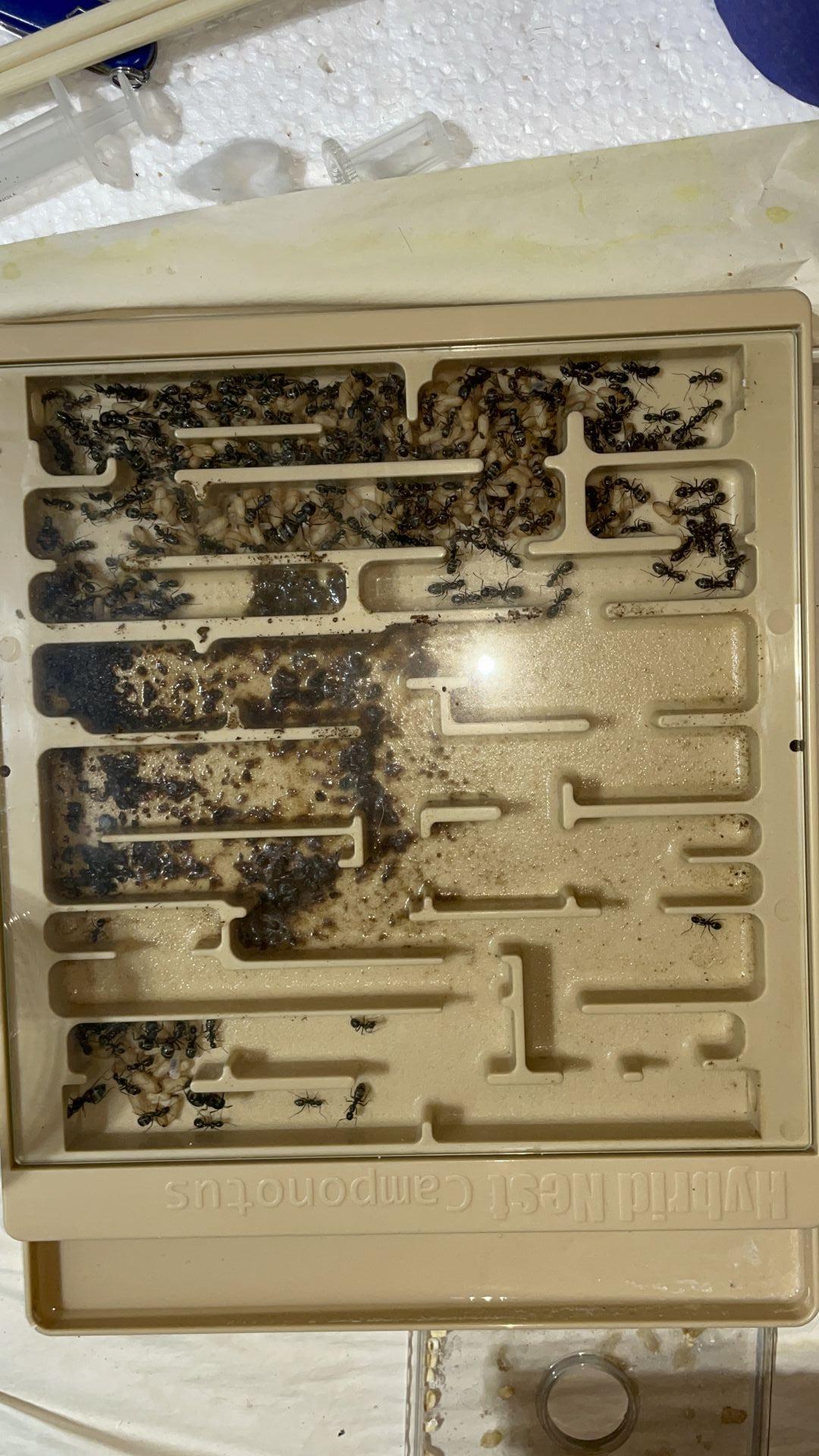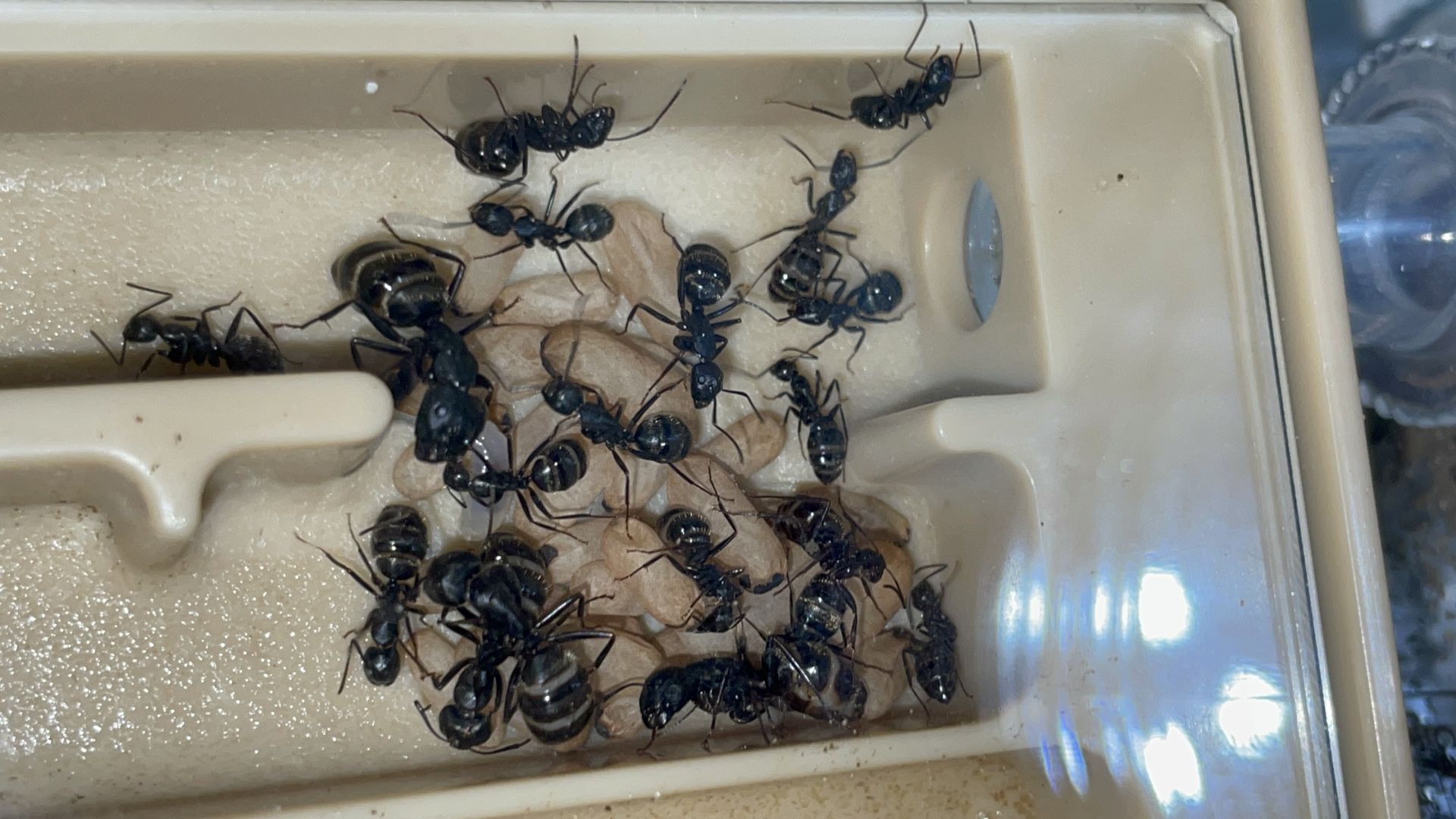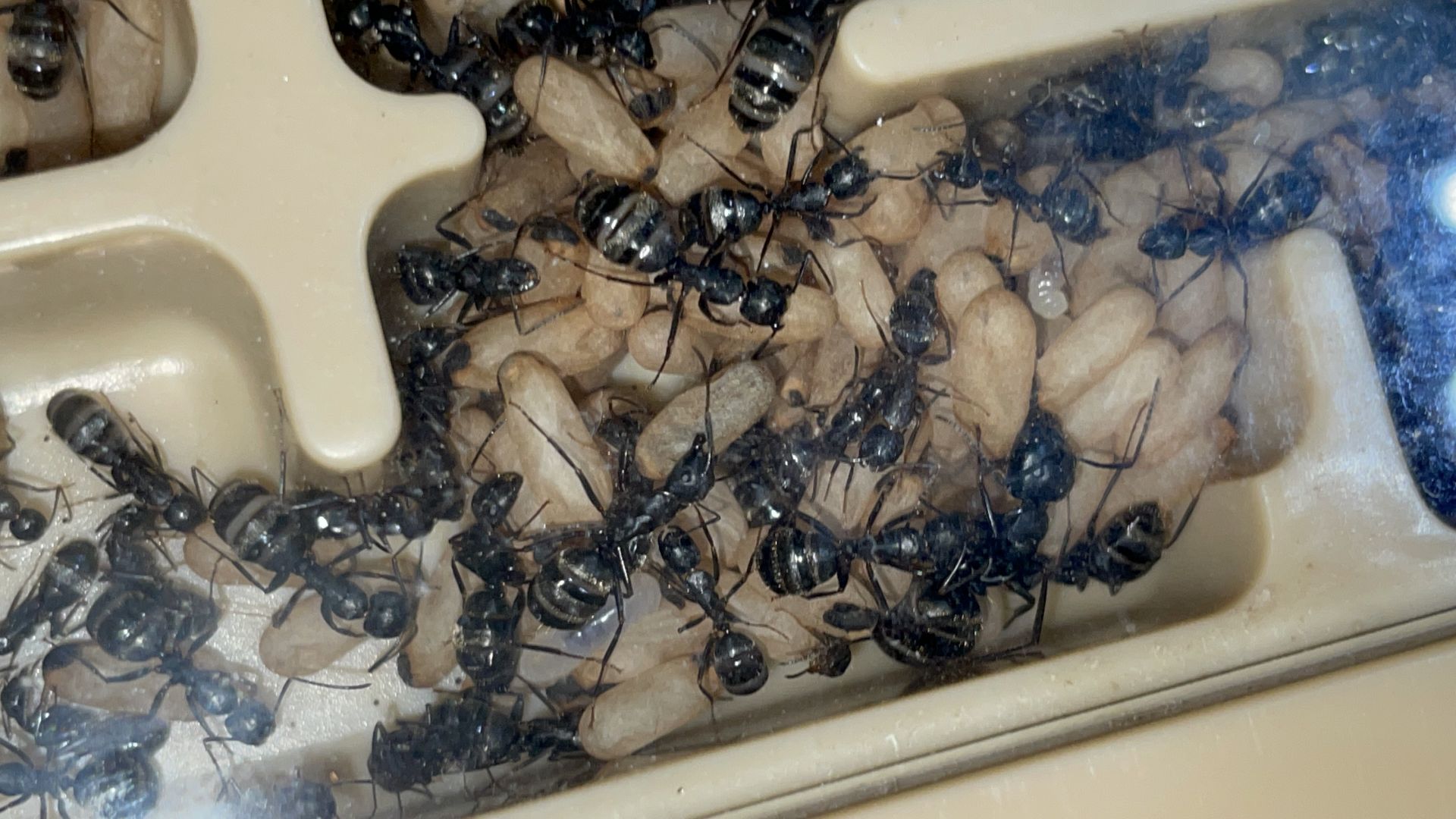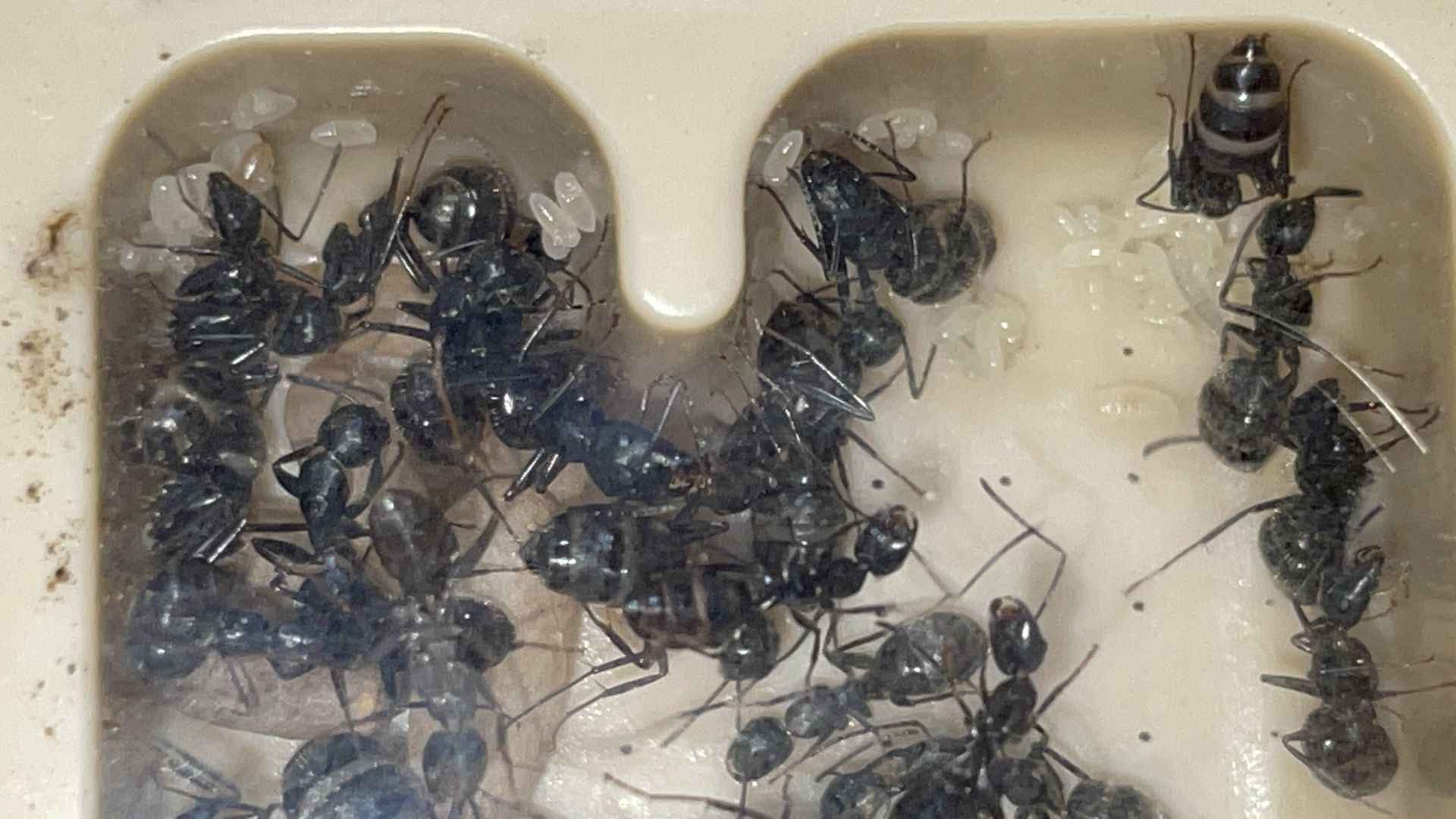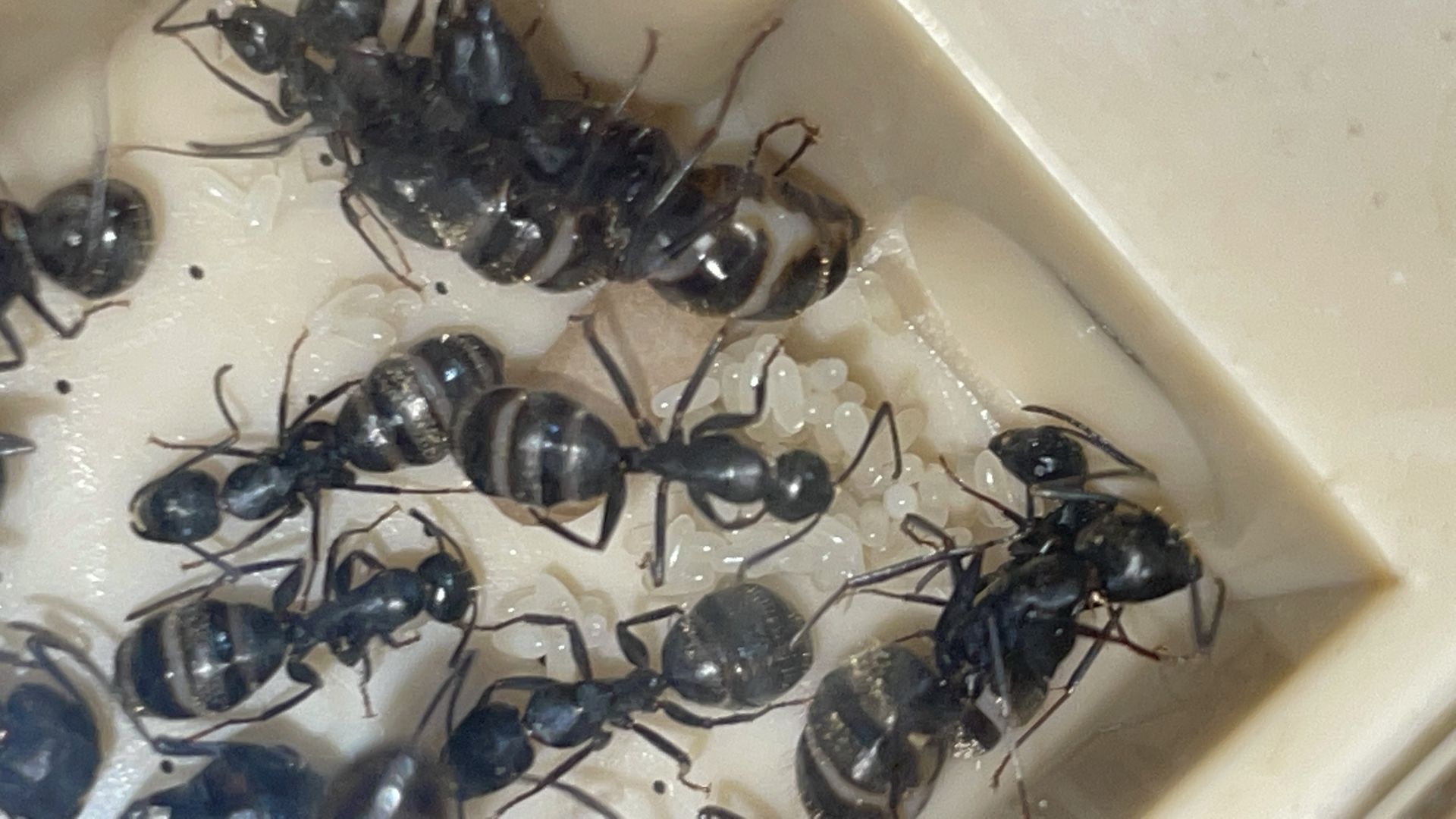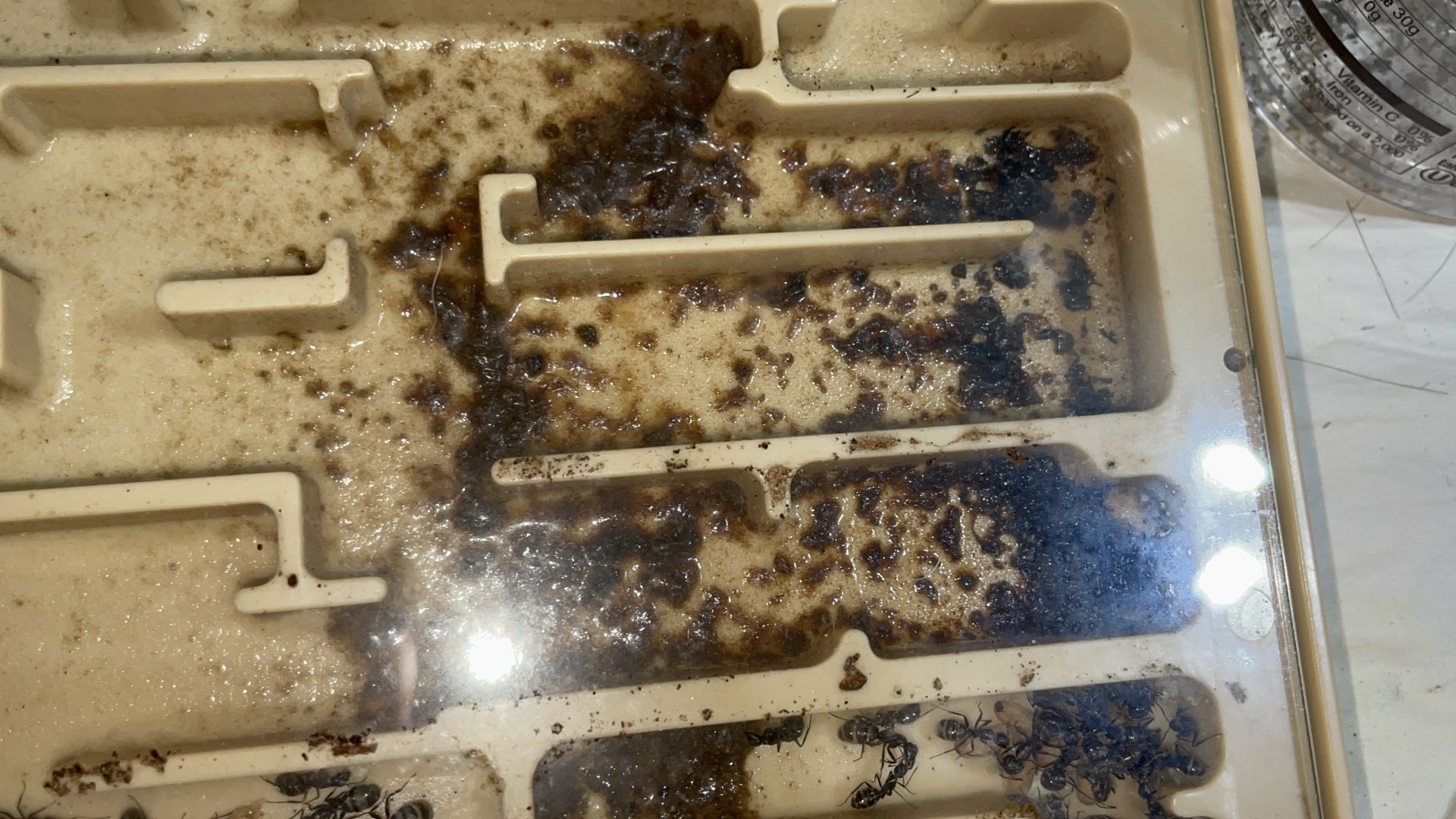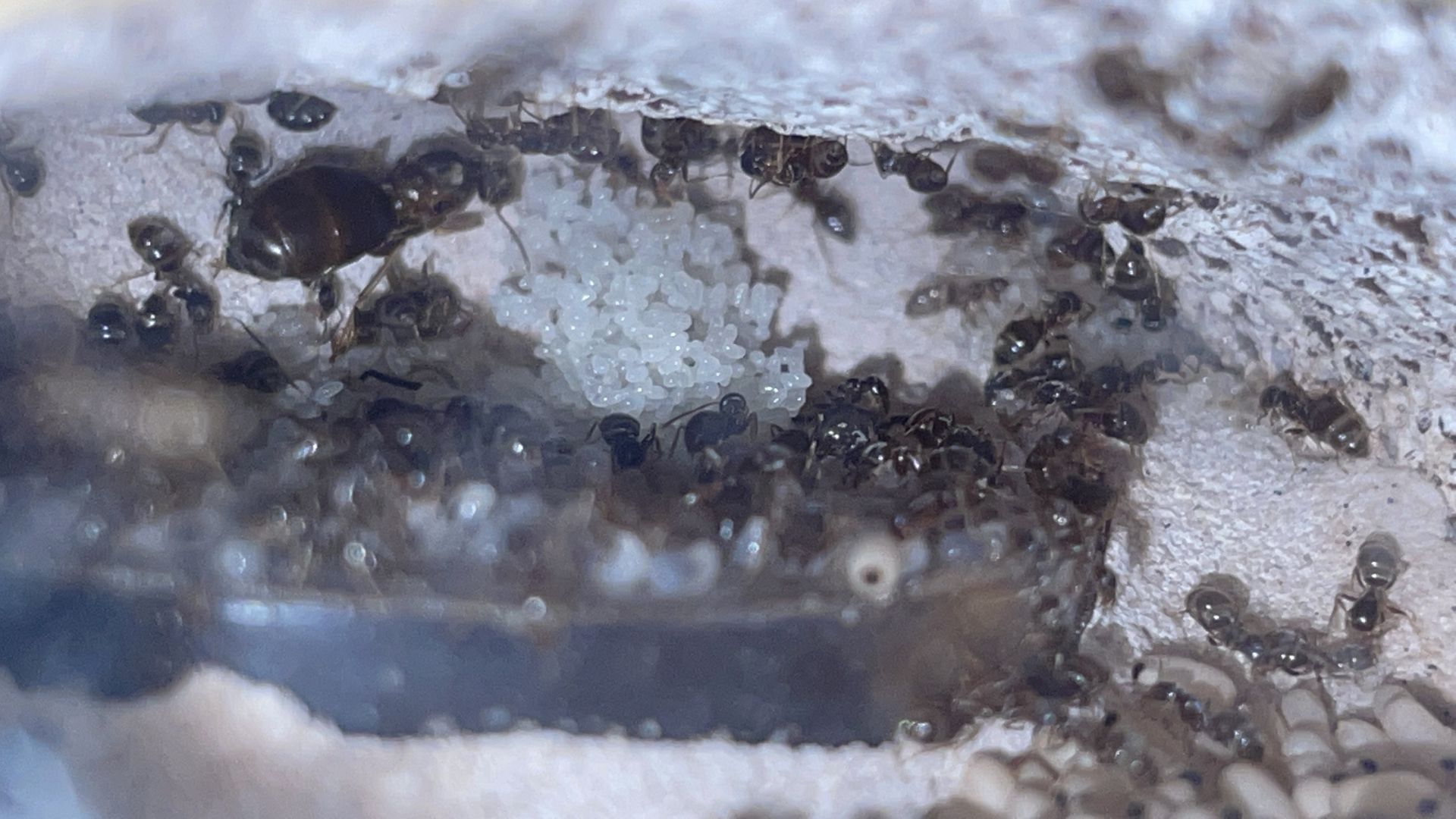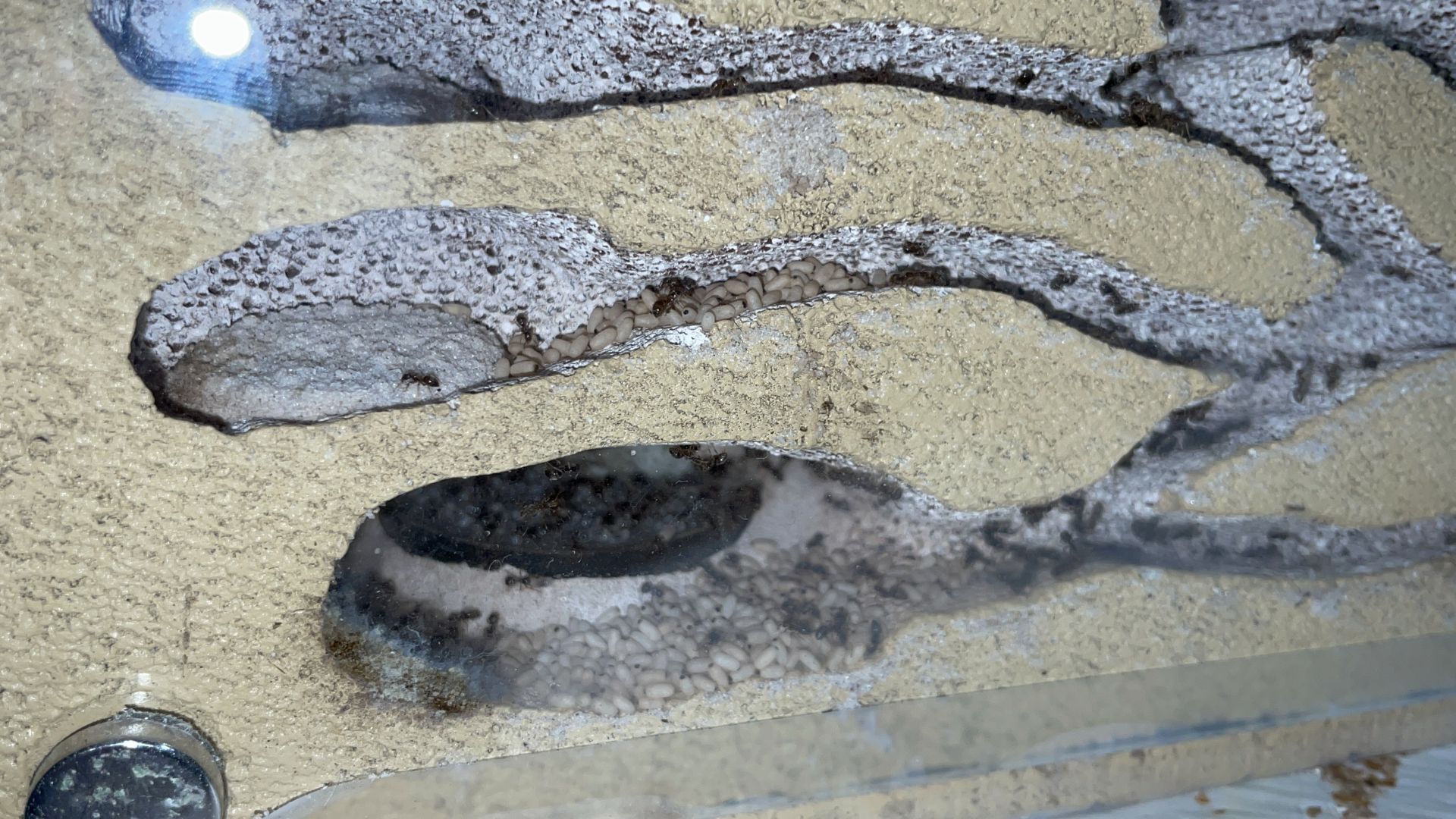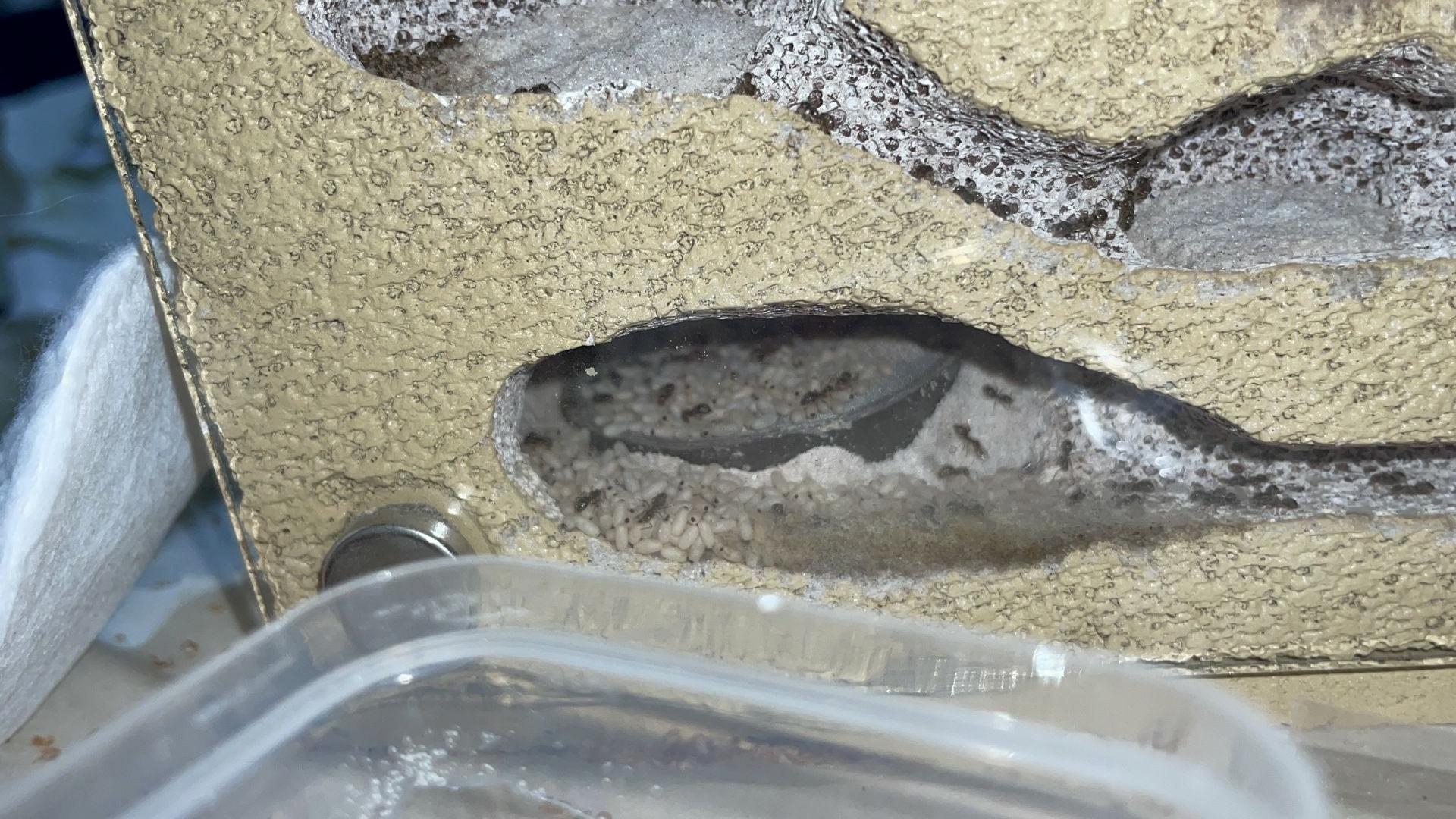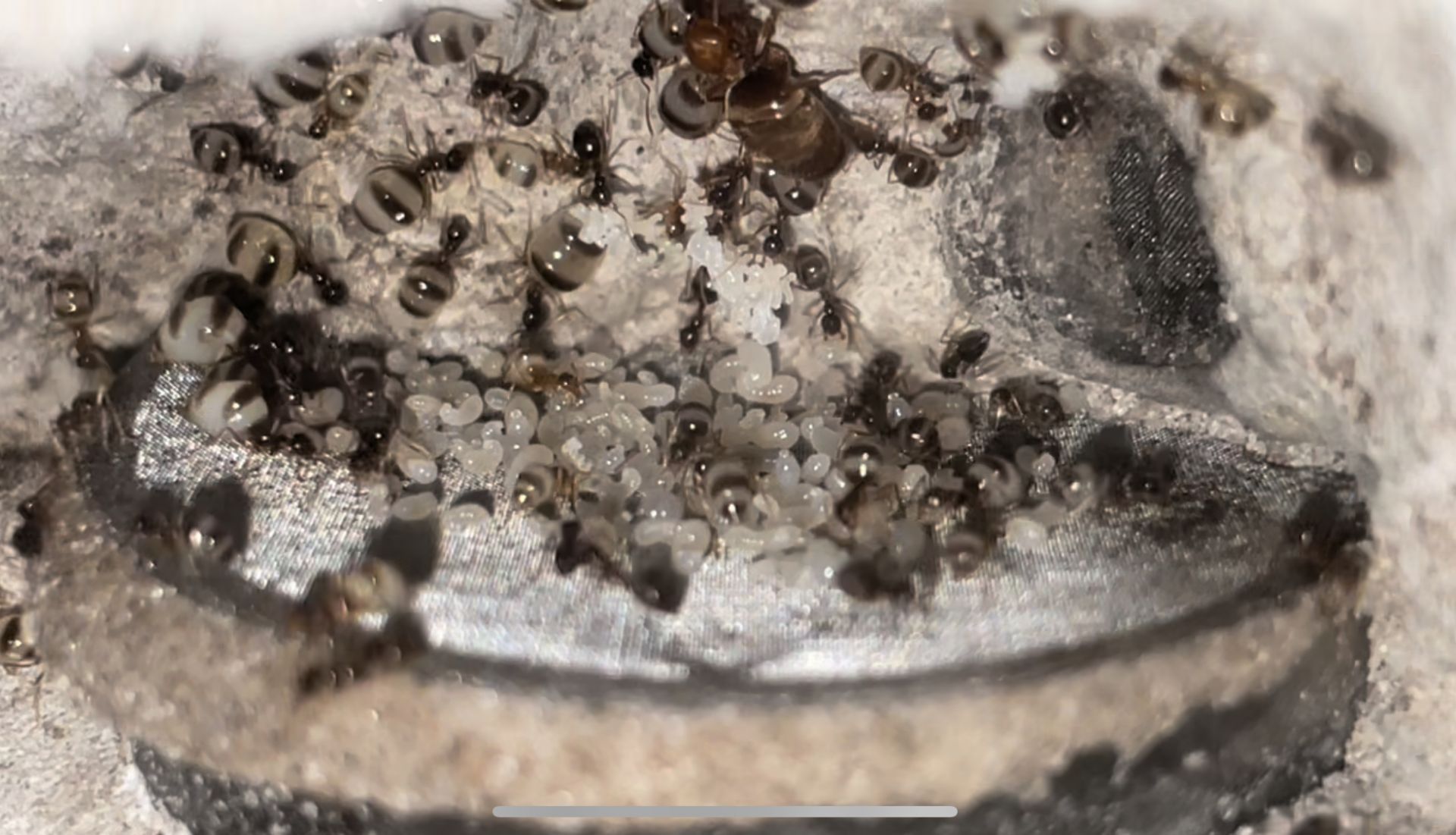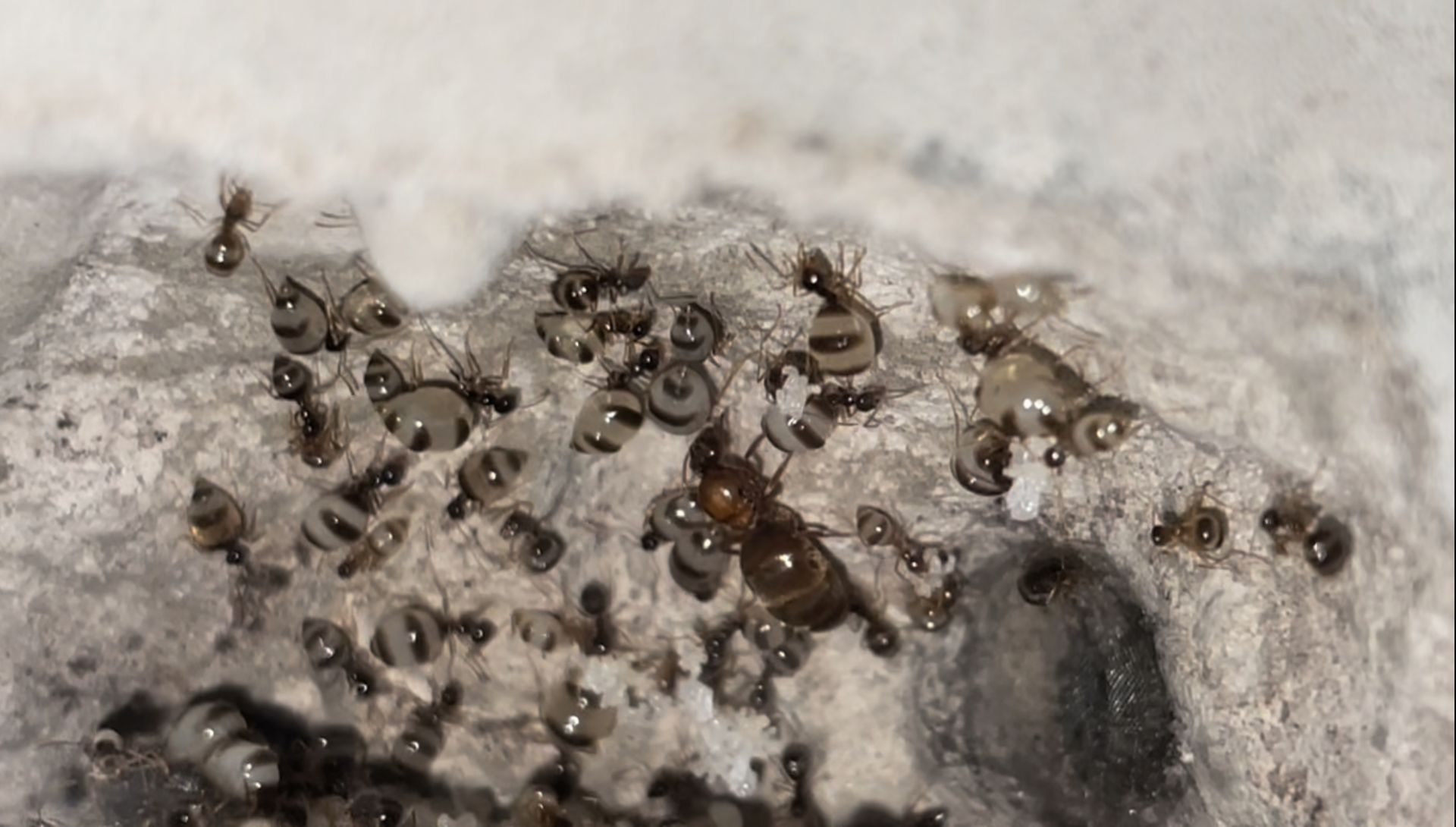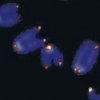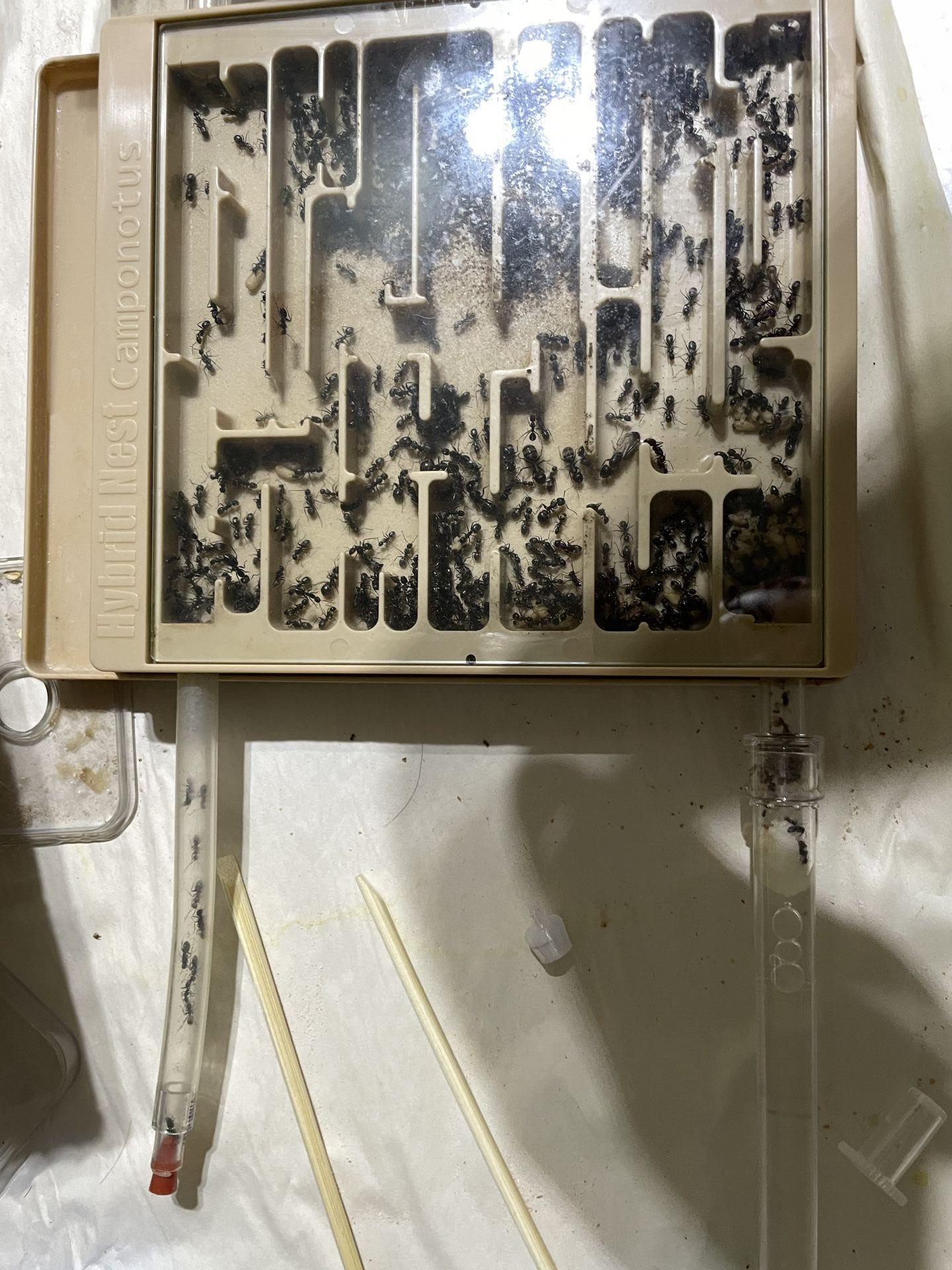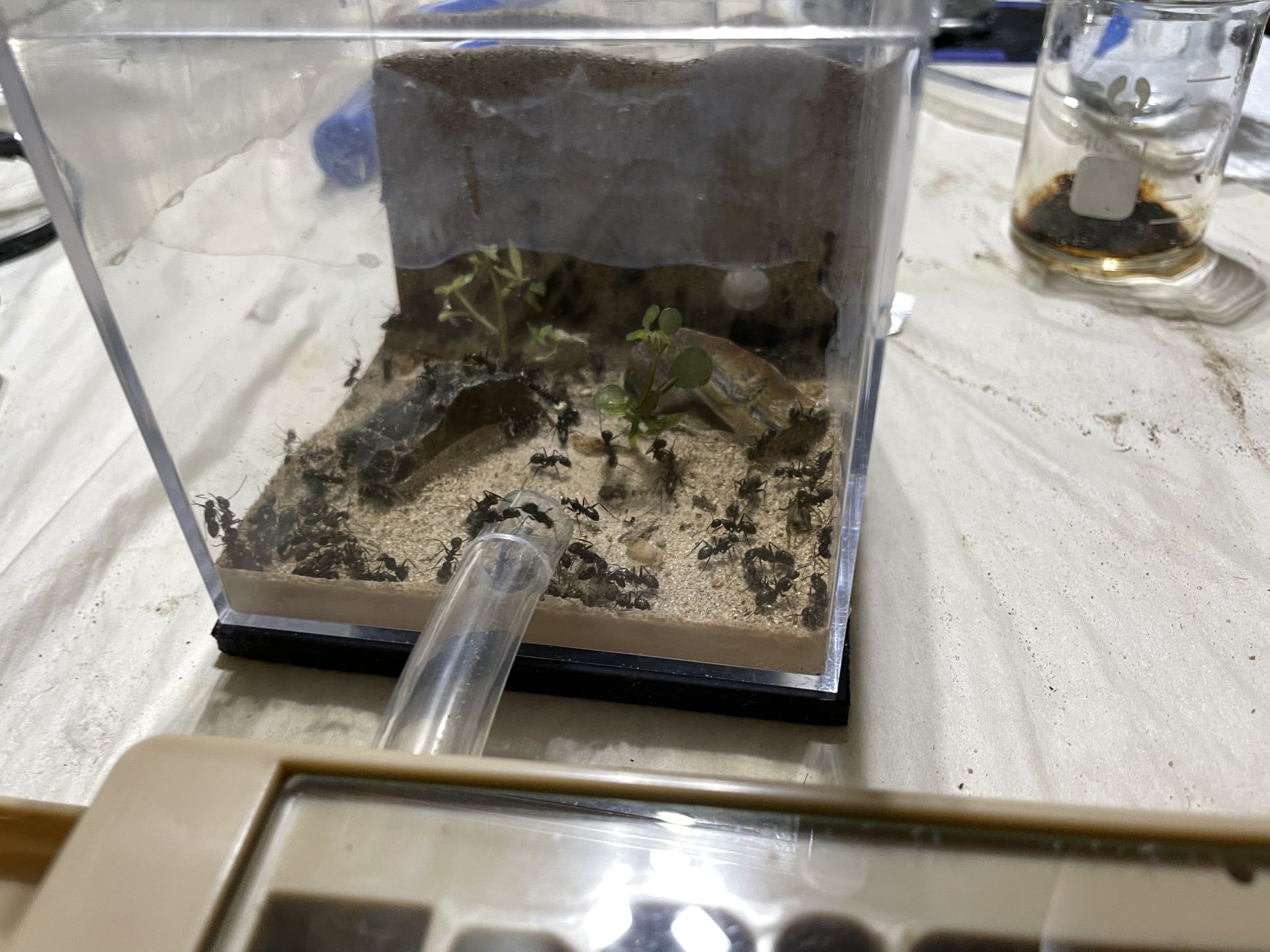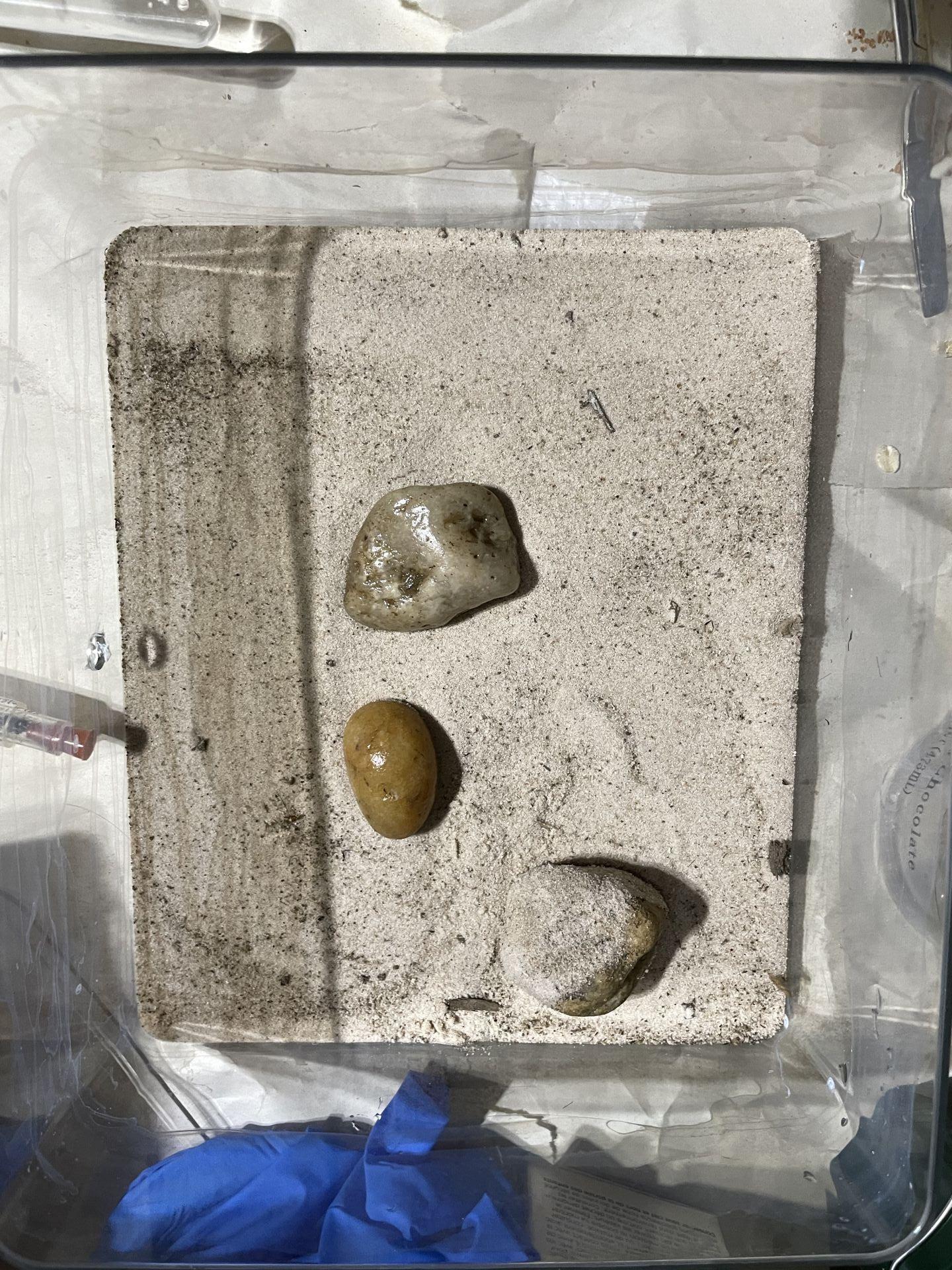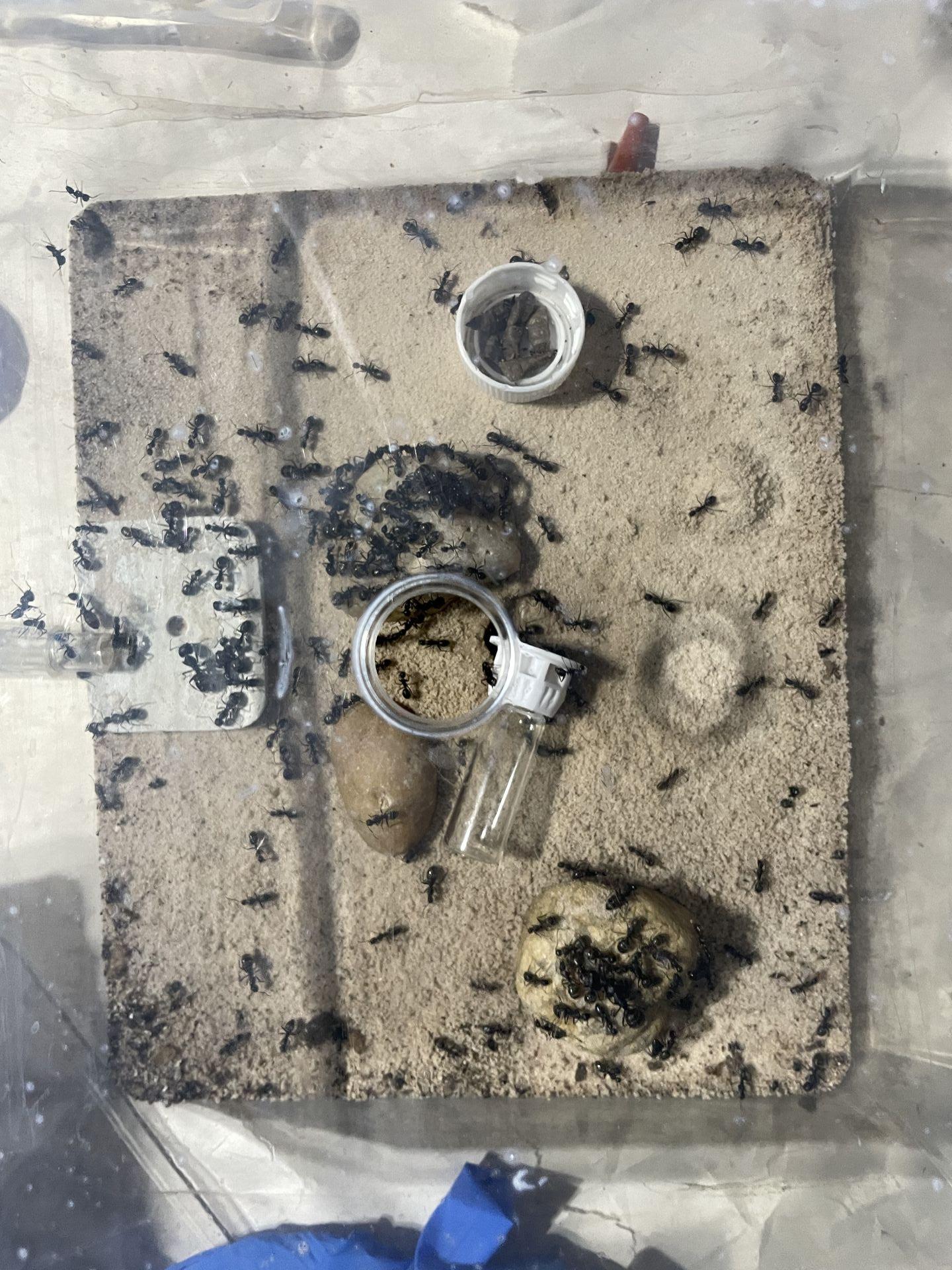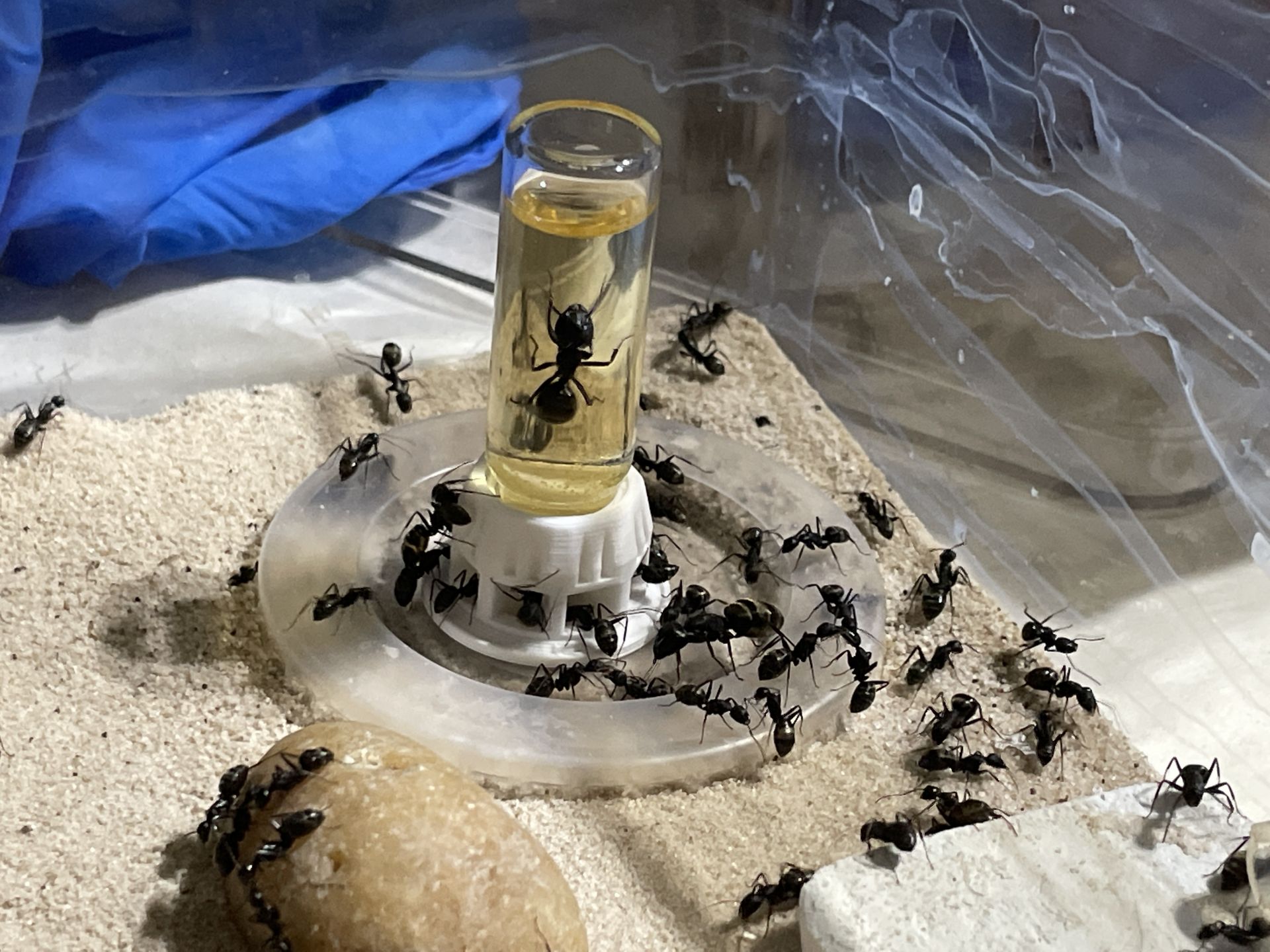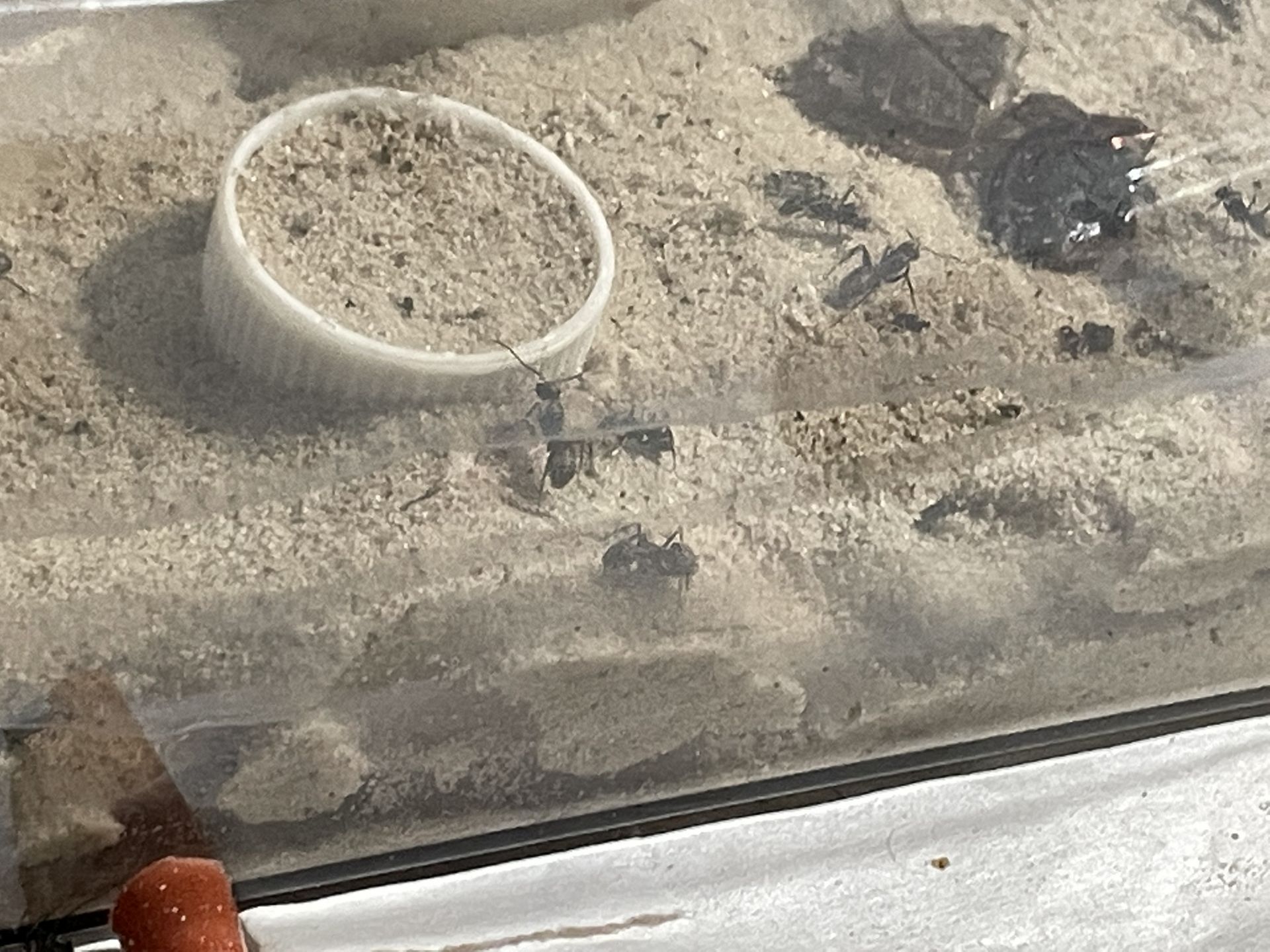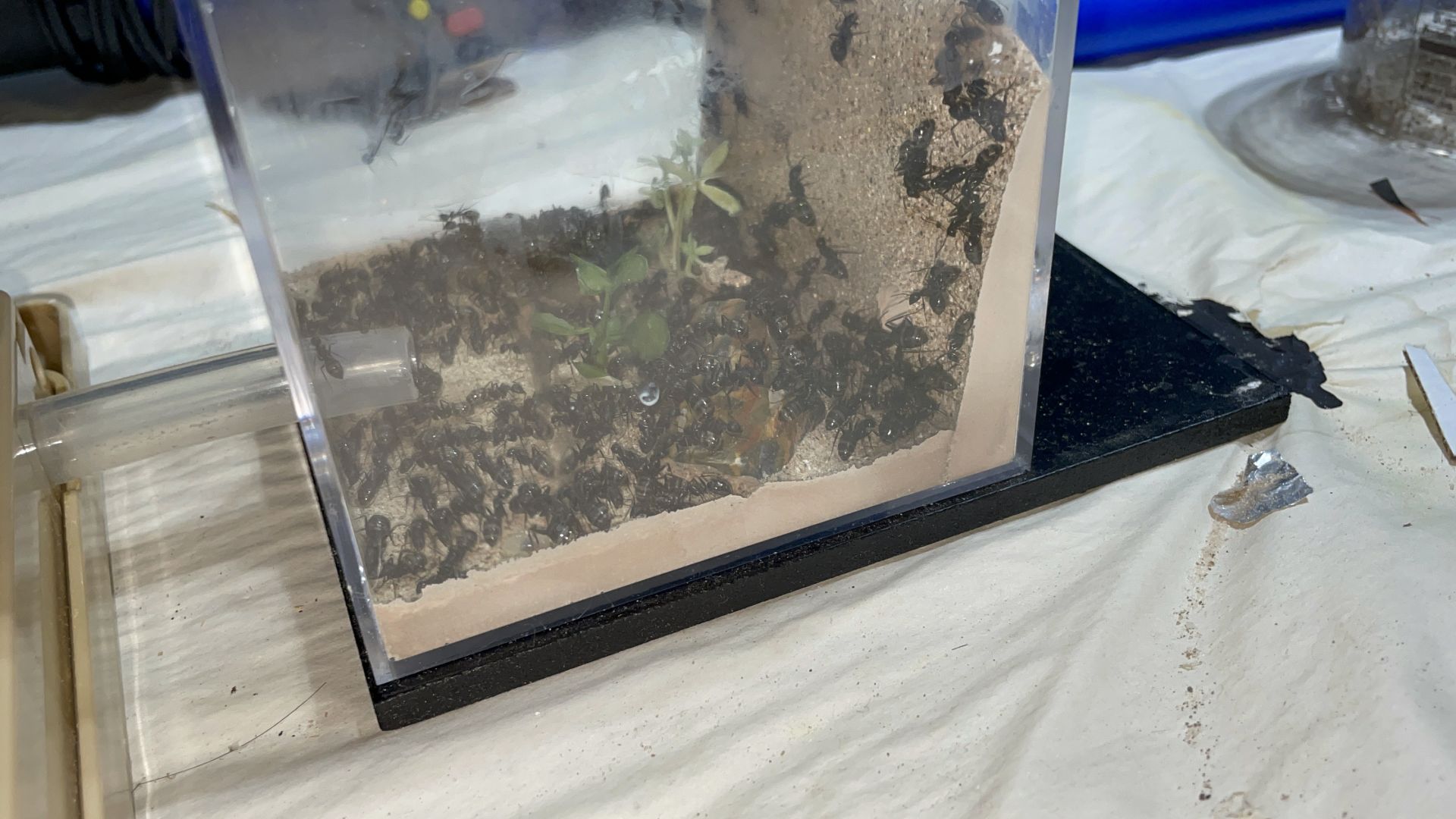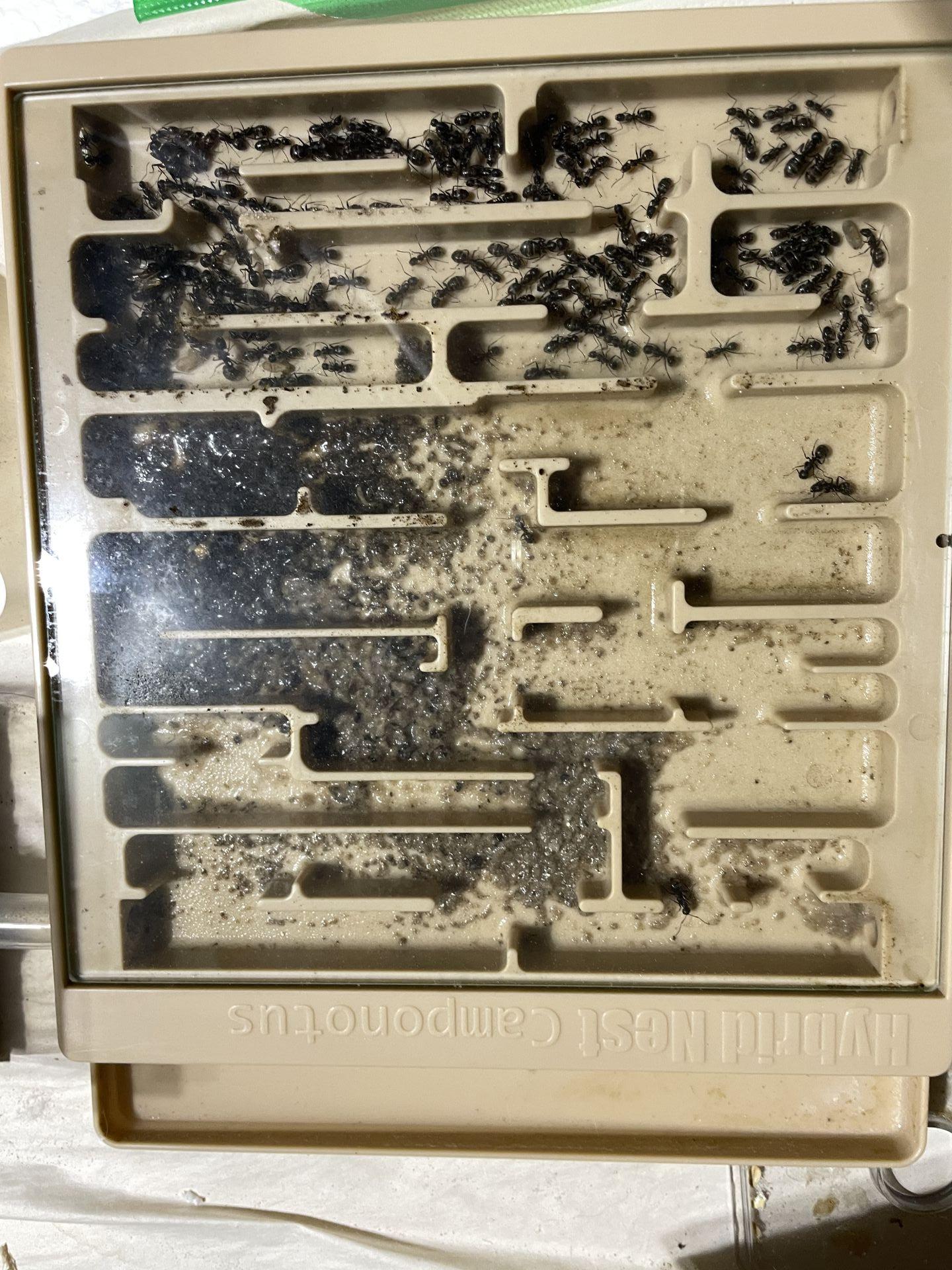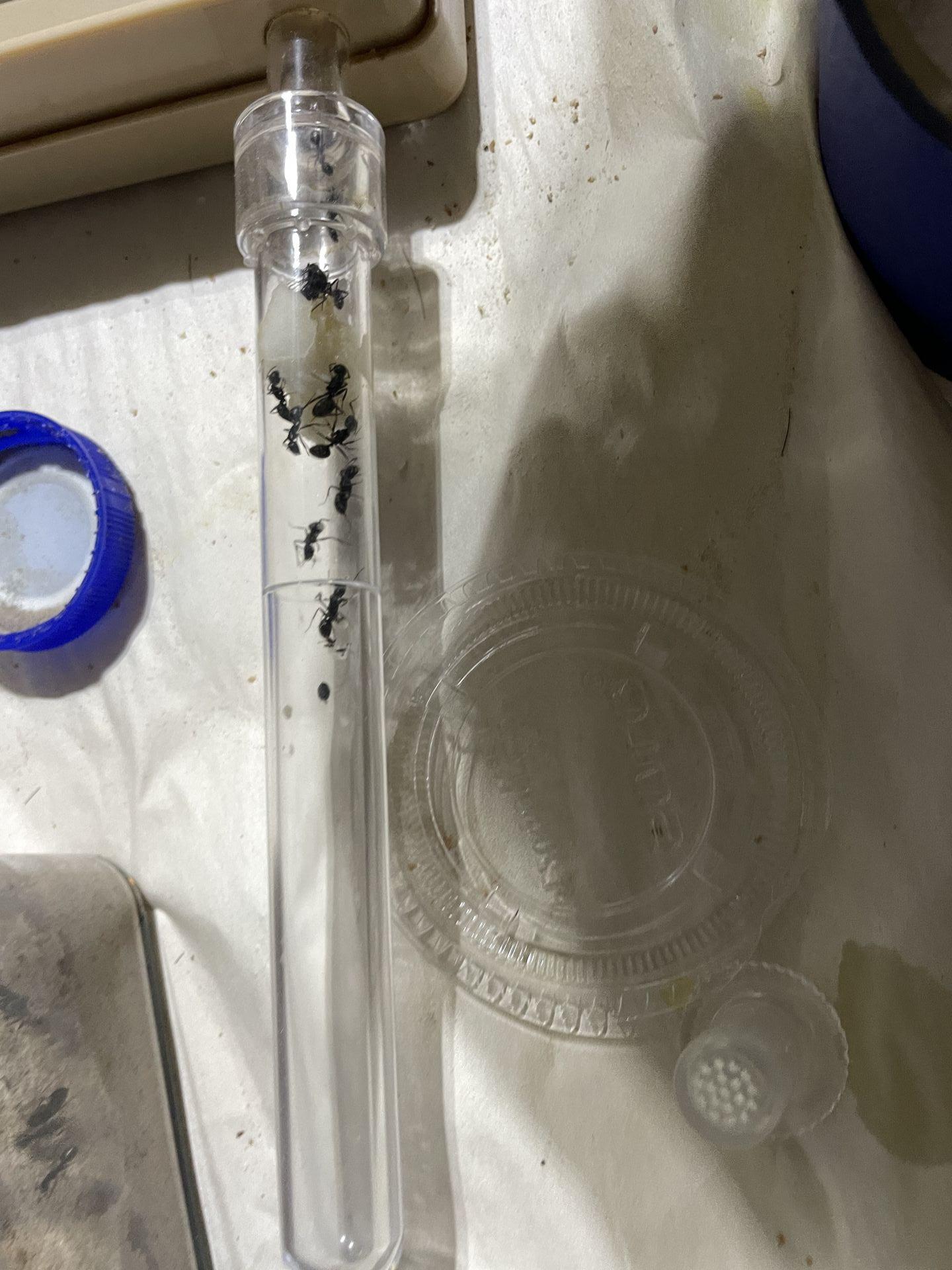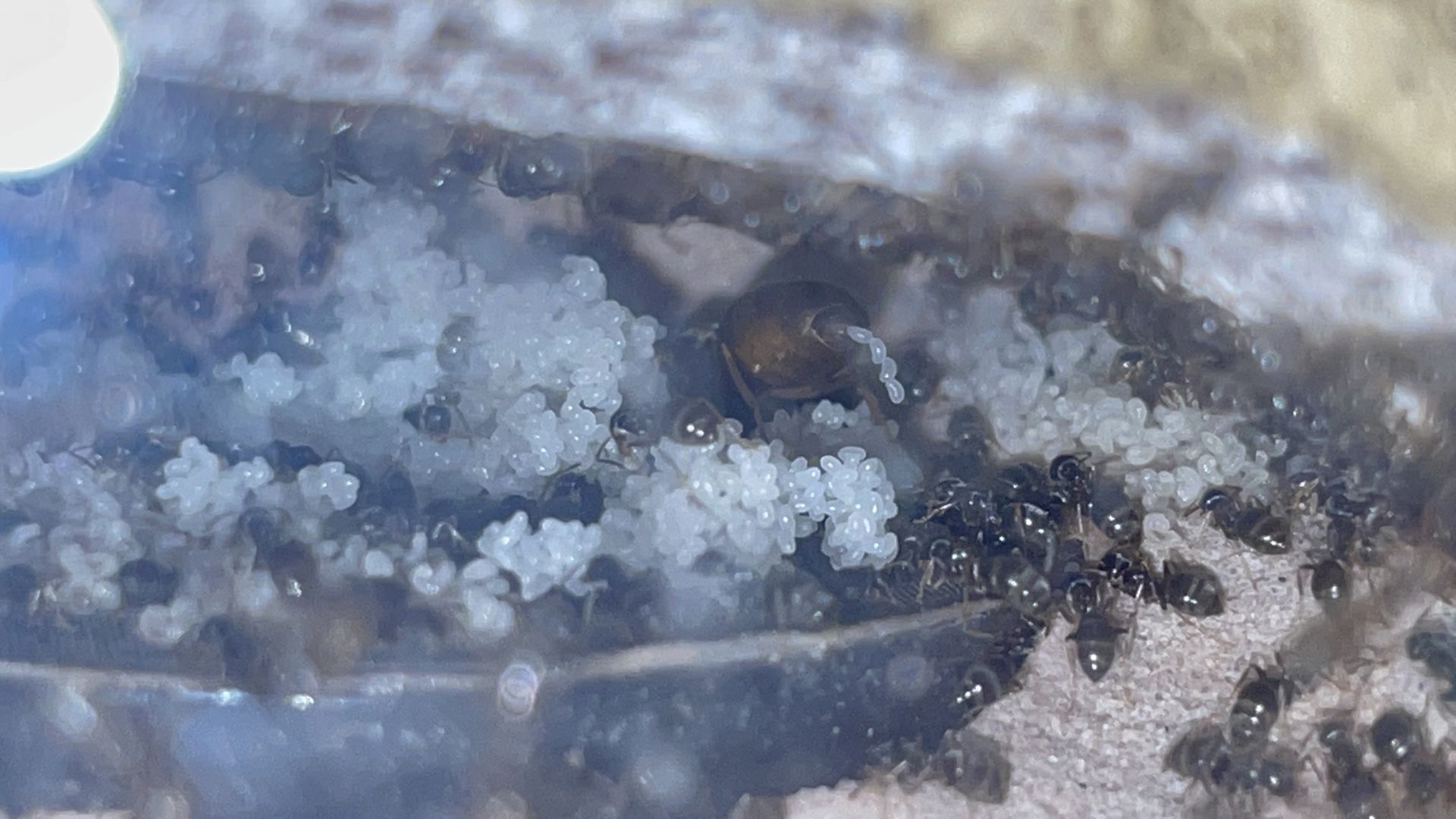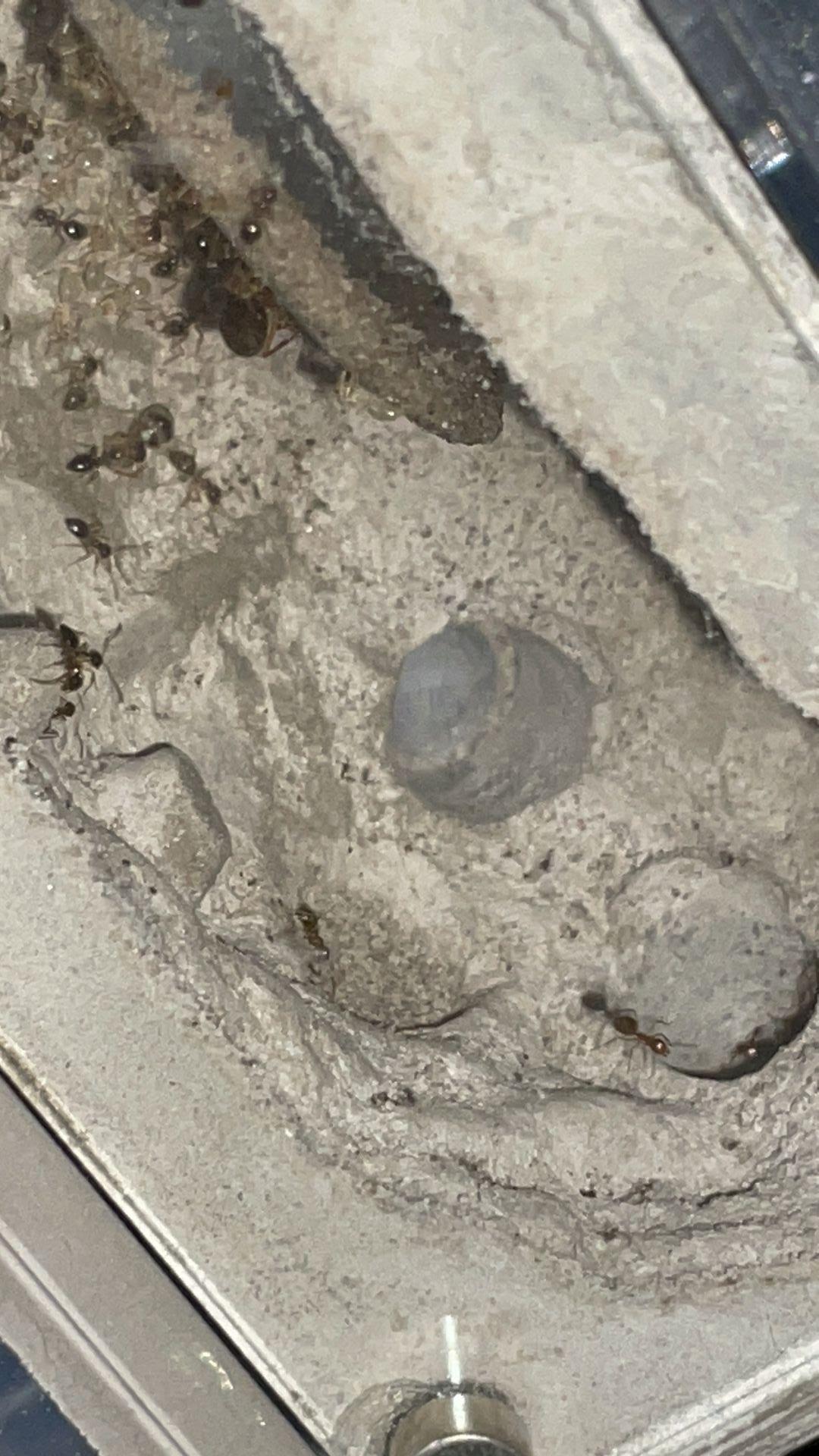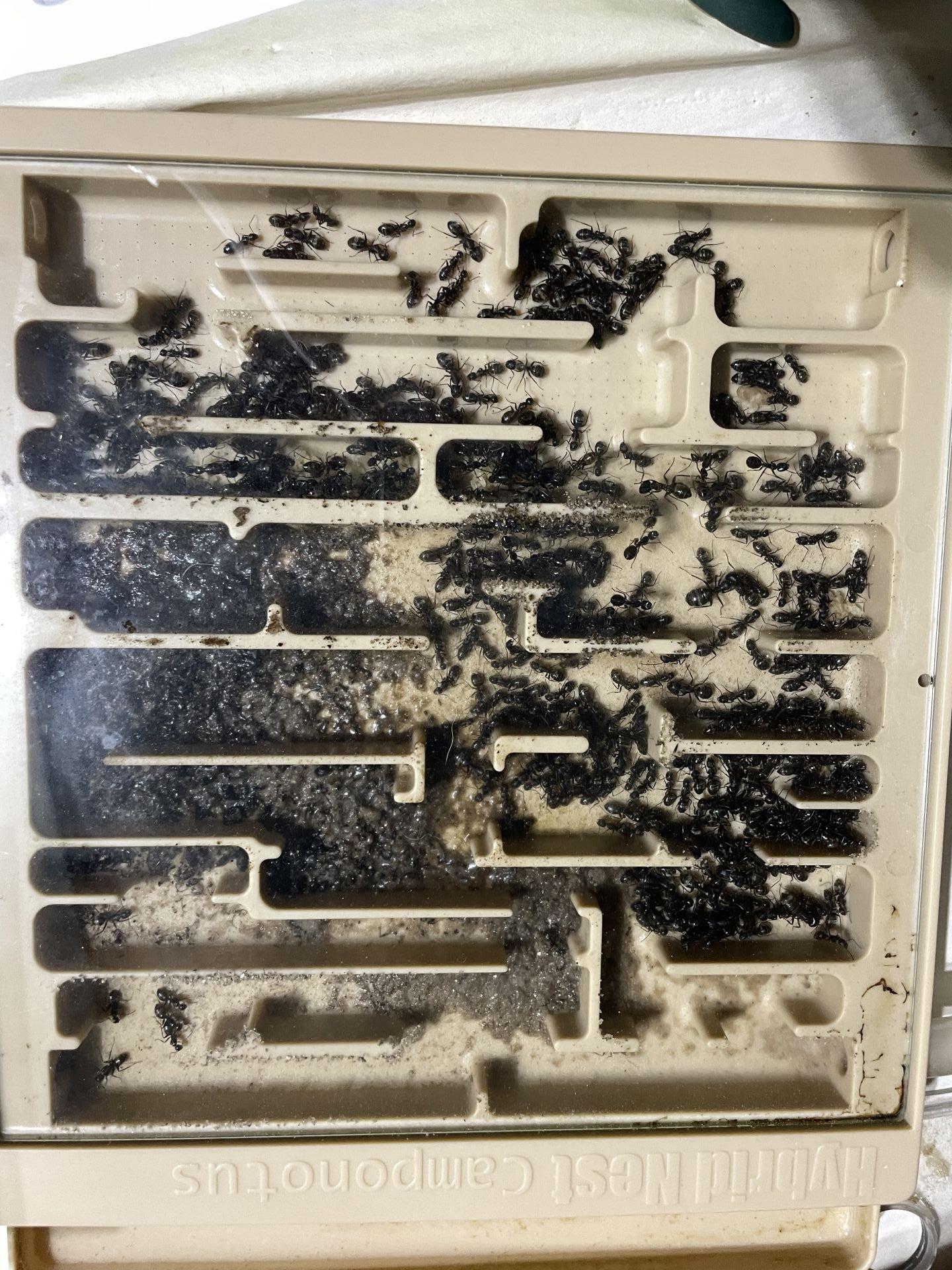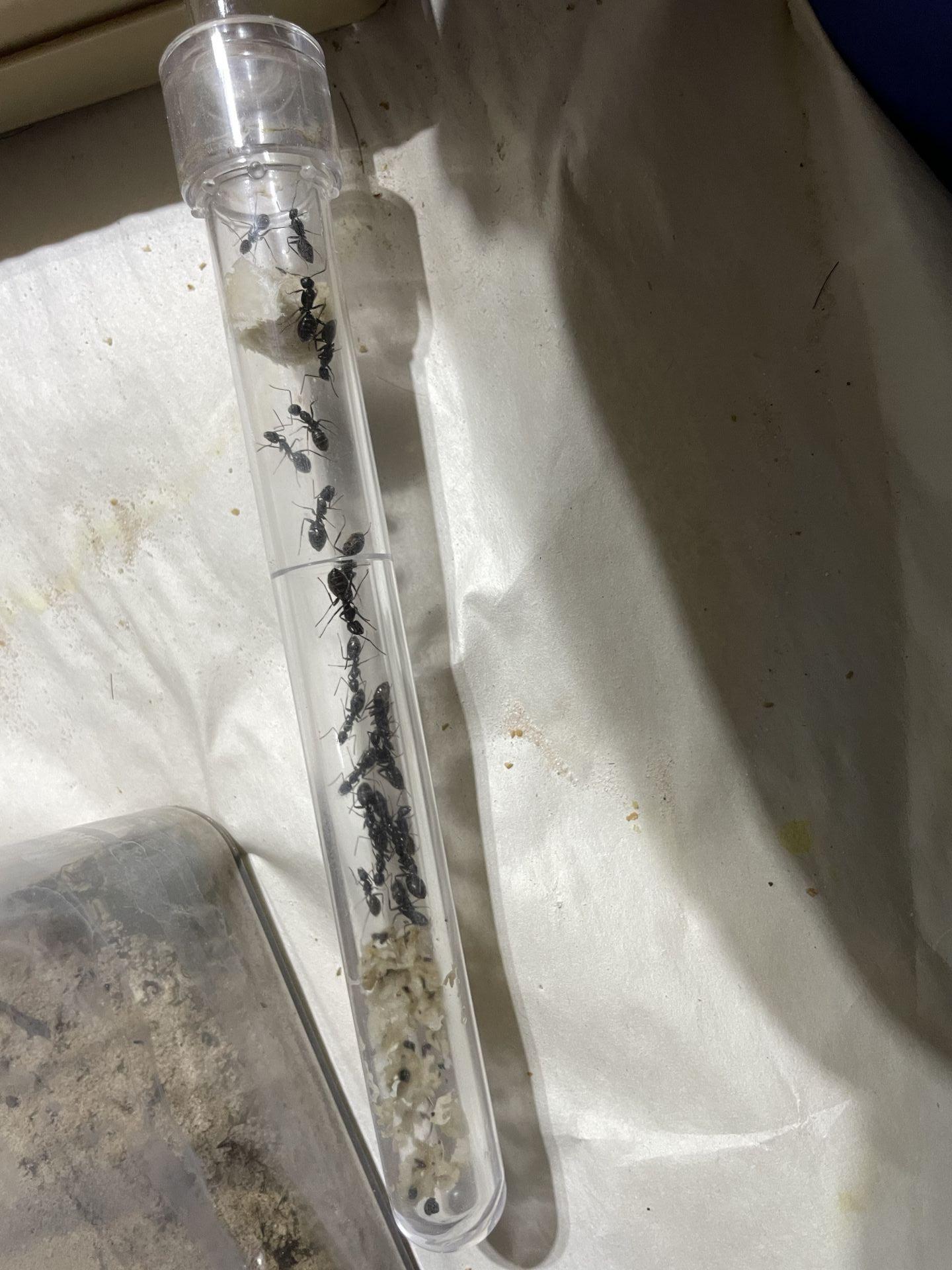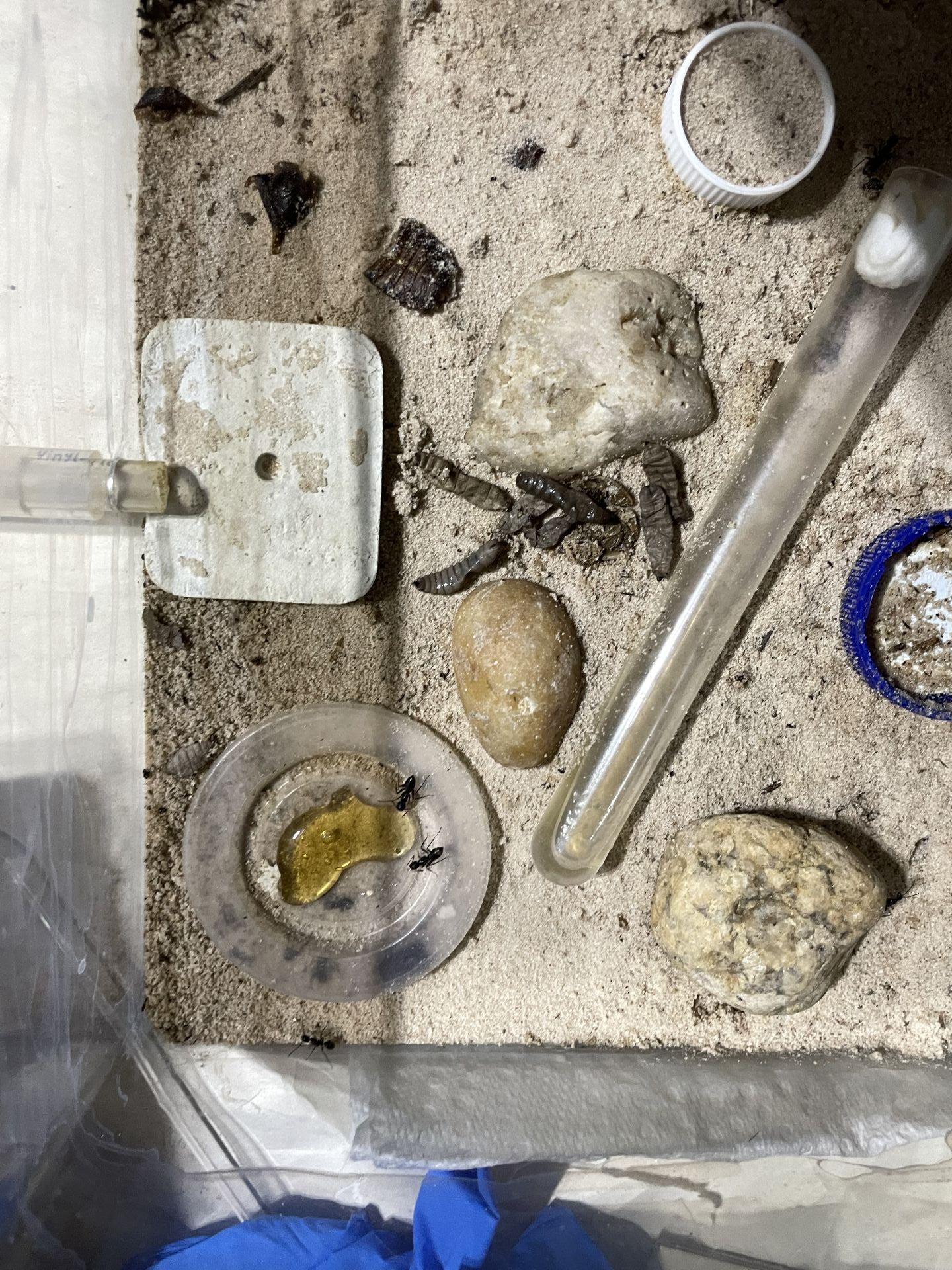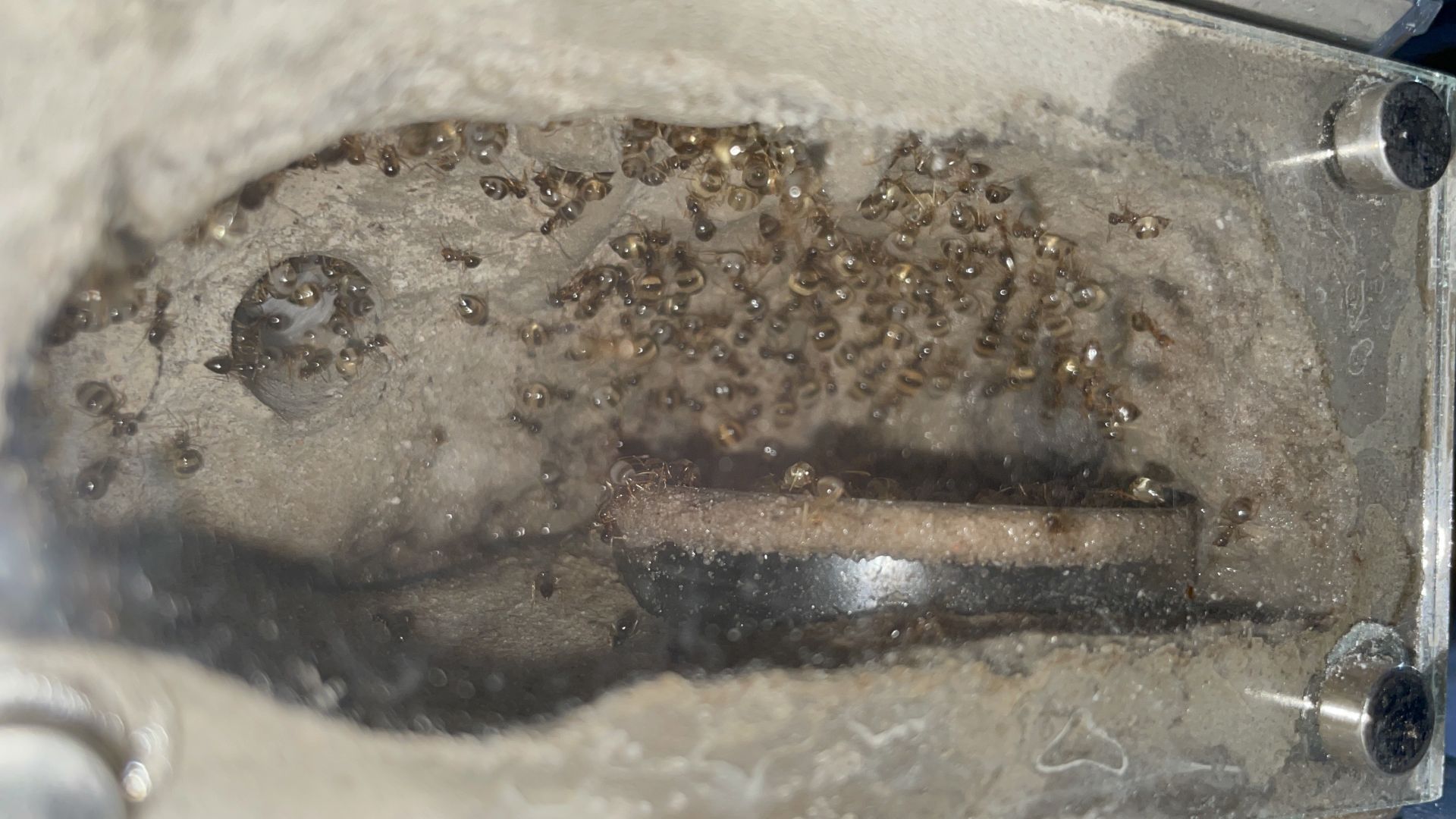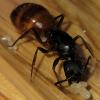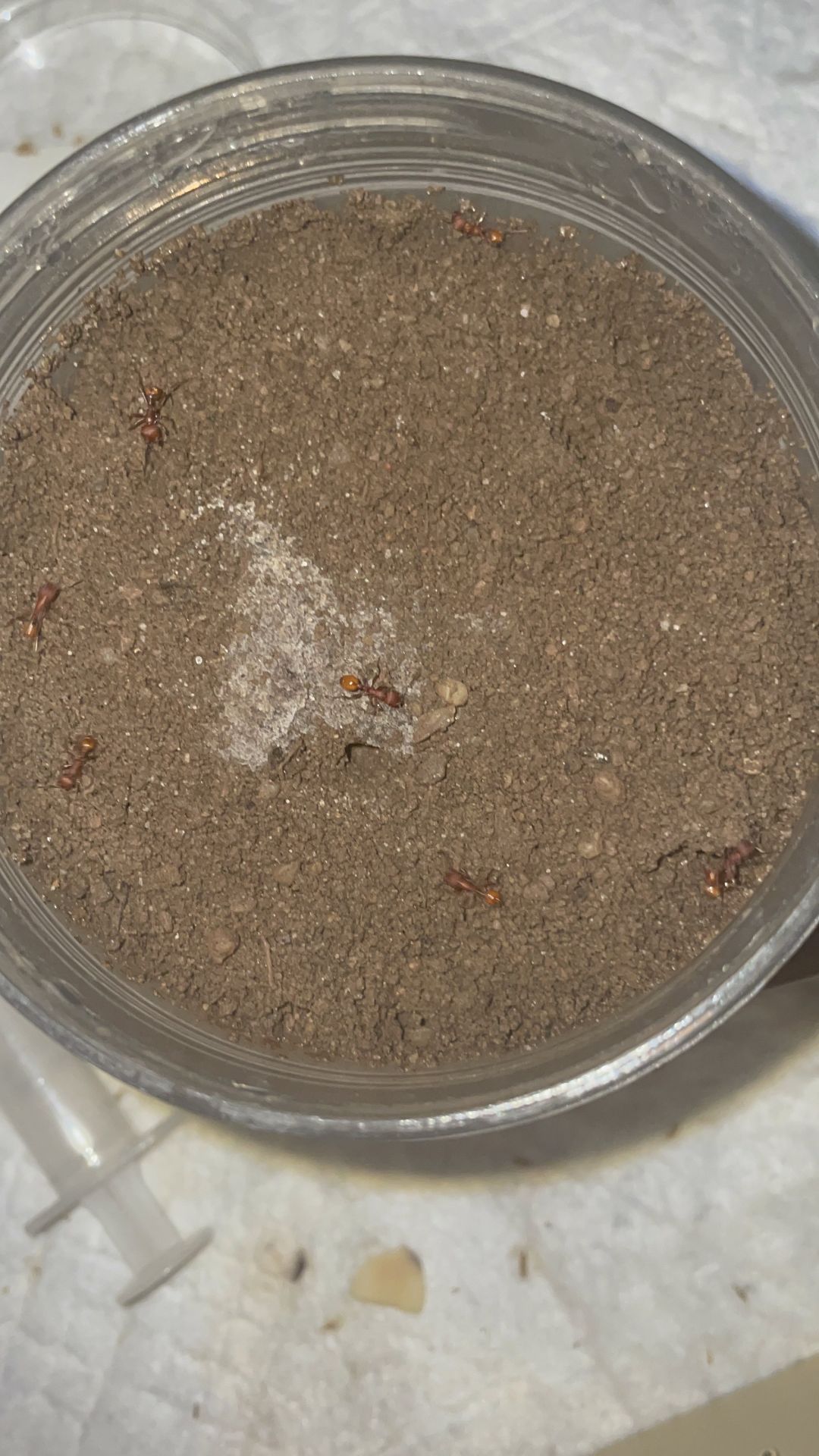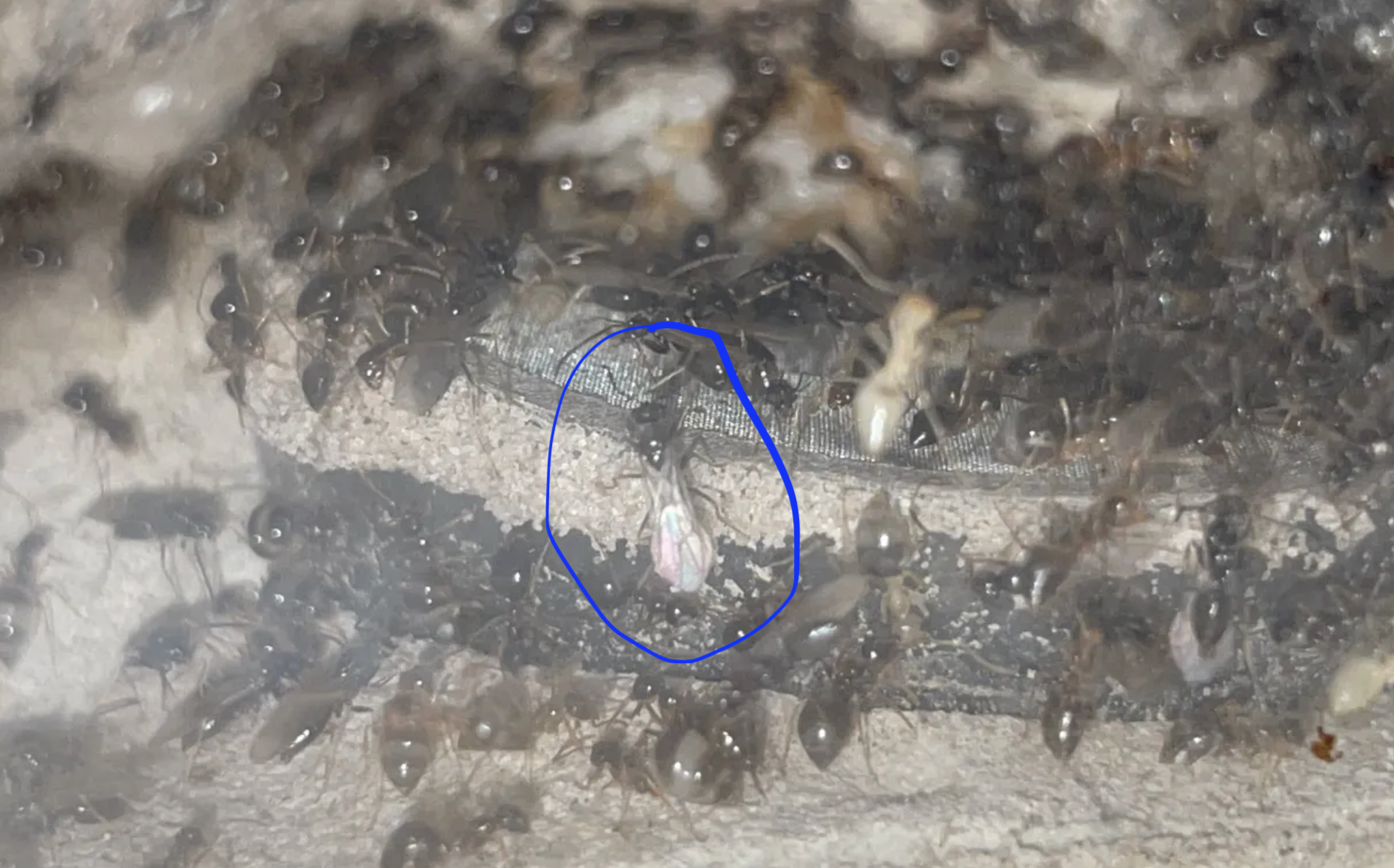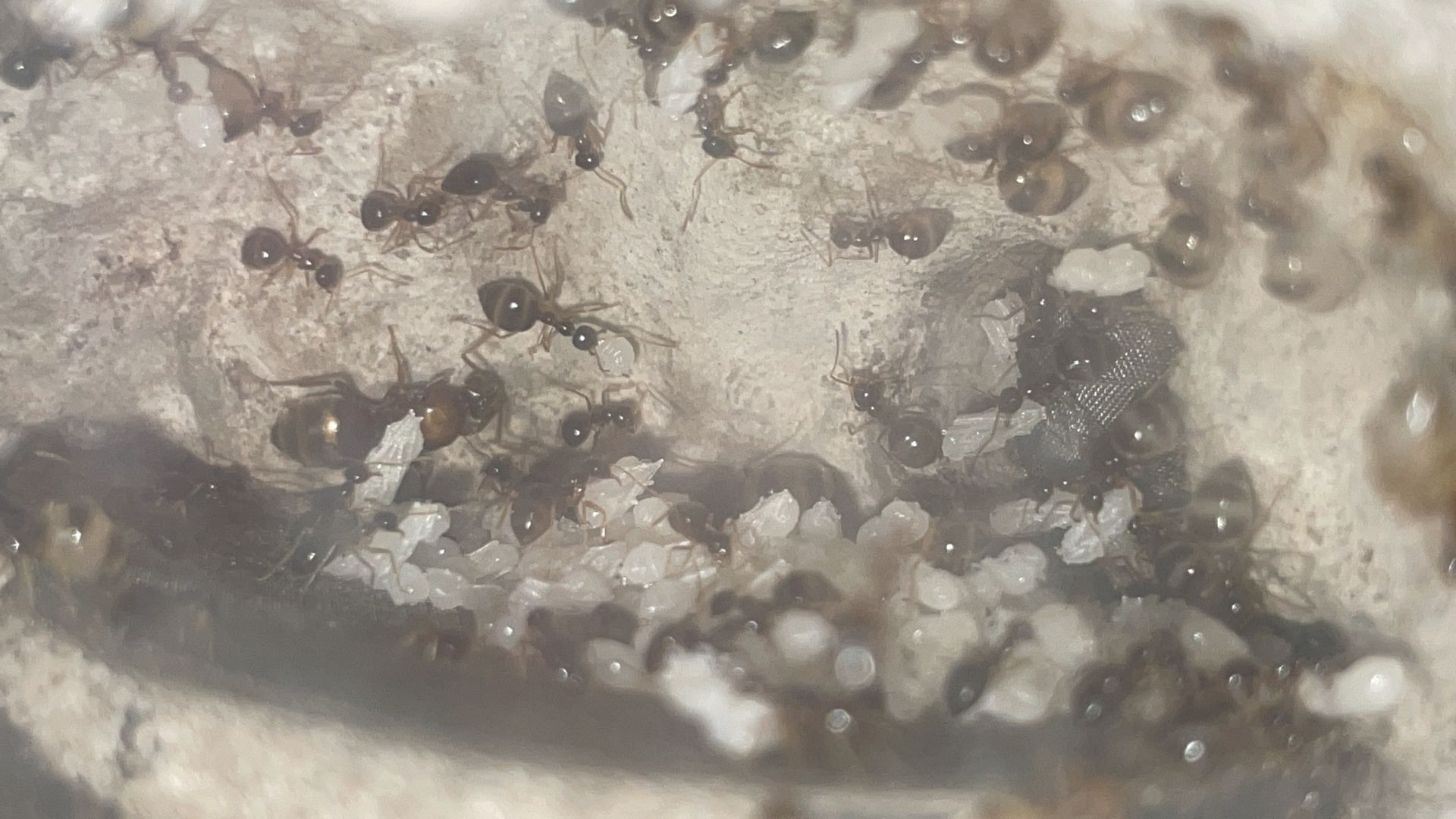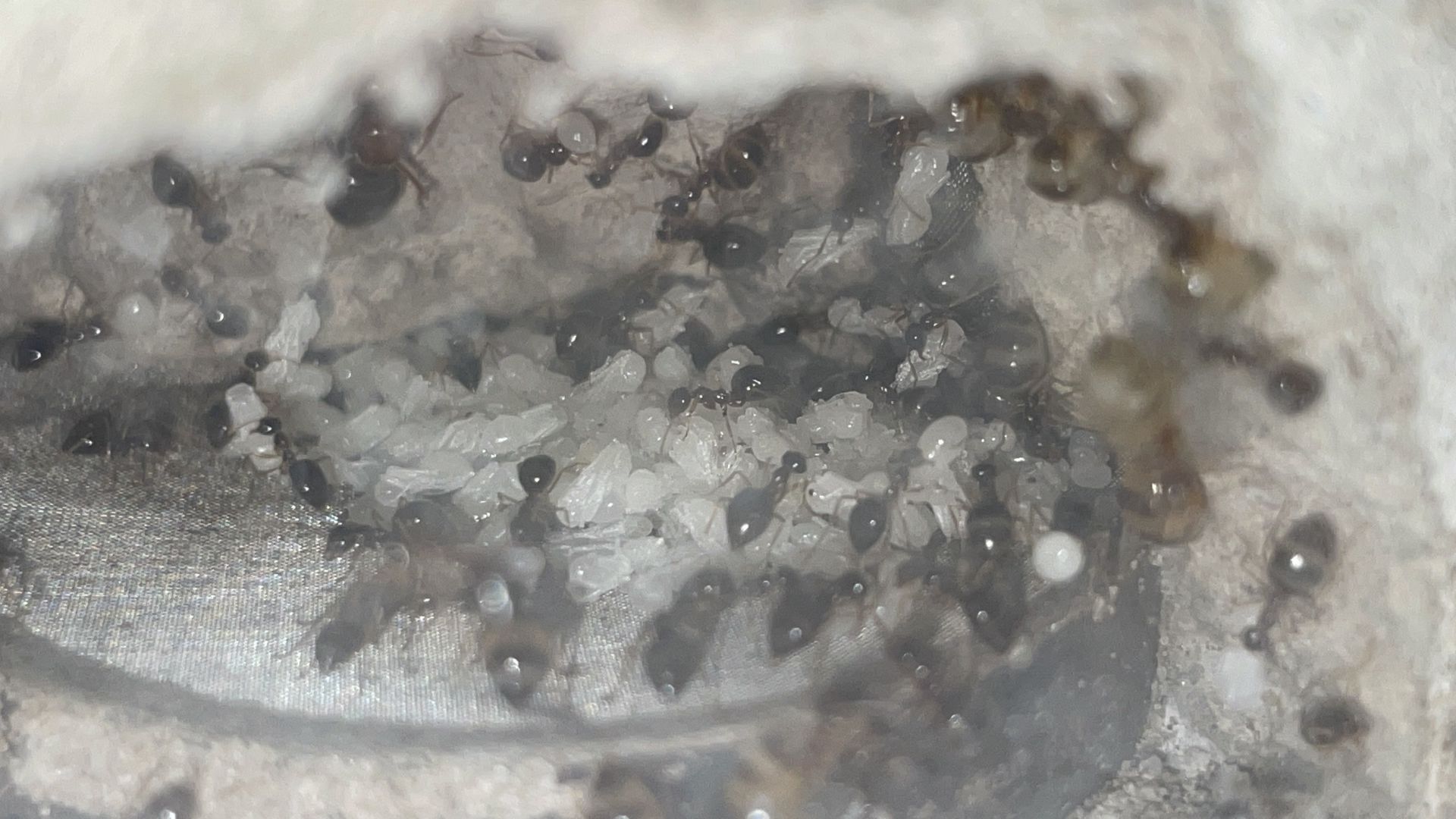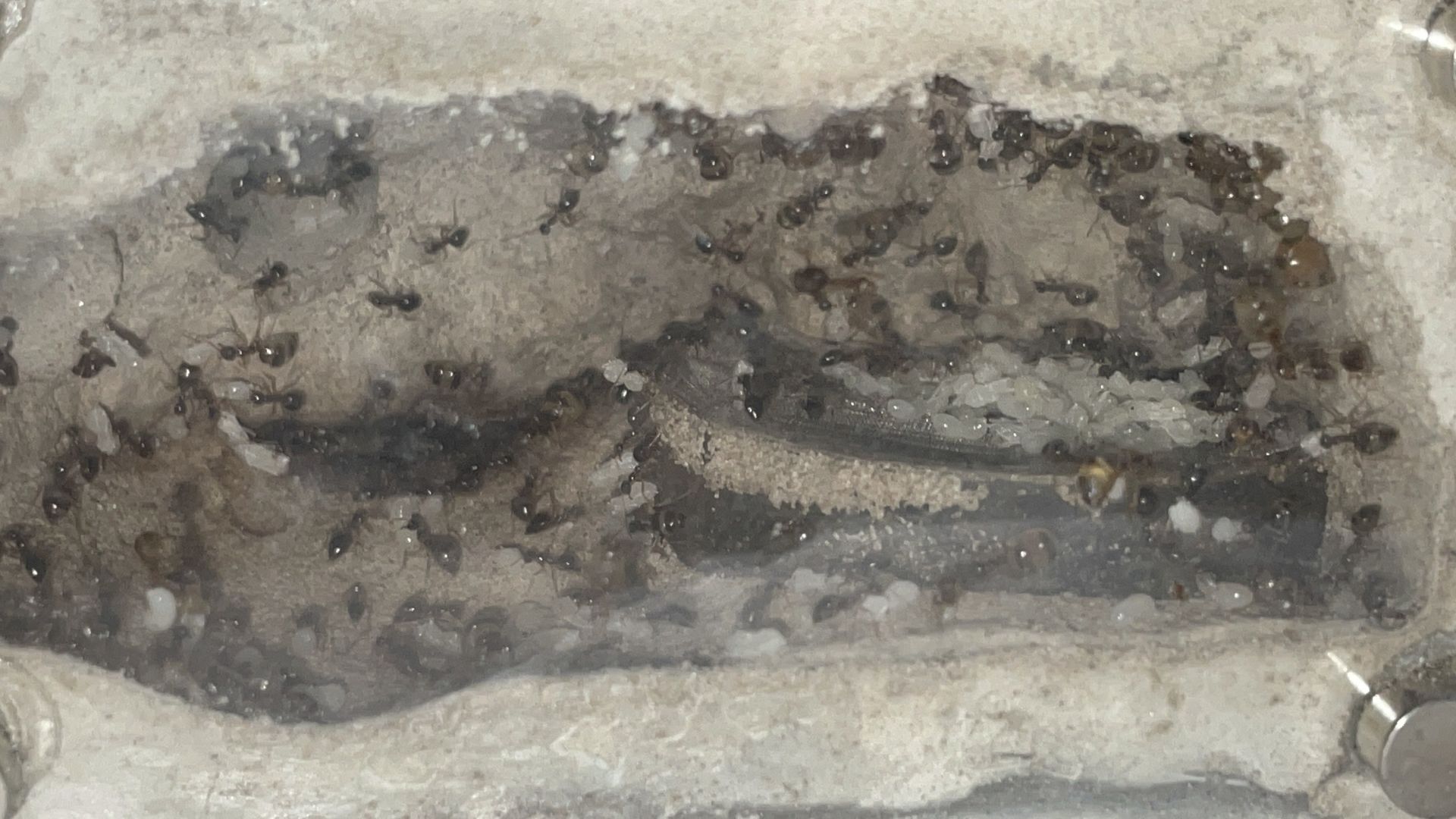9/3/24
You guys probably all thought this was dead, but I've actually been meaning to update this for a long, long time. At first I was going to update it when the spring came. And then I was going to update it when the first batch of workers came. And then another year passed.
"Ok, I'll update it when they get alates"
Unfortunately that never happened. My P. imparis and P. occidentalis colonies got alates, but not this one (we don't talk about my Lasius).
So first off, the C. pennsylvanicus. Their numbers have pretty much stayed at net-zero growth, just they moved from that AC nest into a Tarheel Ants Nucleus. Really quickly I'd like to give my review of the AC hybrid nest 2.0: It sucks. Do not use it without any modifications. That is all. Poop and moisture just builds up with no absorption. The visibility is really nice though, so I can clearly see how much poop and trash has accumulated.
I think their numbers have stayed so constant because I haven't fed enough for them to change significantly, so if anyone was wondering if limiting food works to contain colony size, here's evidence that it does, I guess. Of course, I don't know if this has any long-term effects. Perhaps cycling periods of high and low food could work. I haven't seen the queen in quite some time, but new eggs do appear so I can only assume that she's fine.

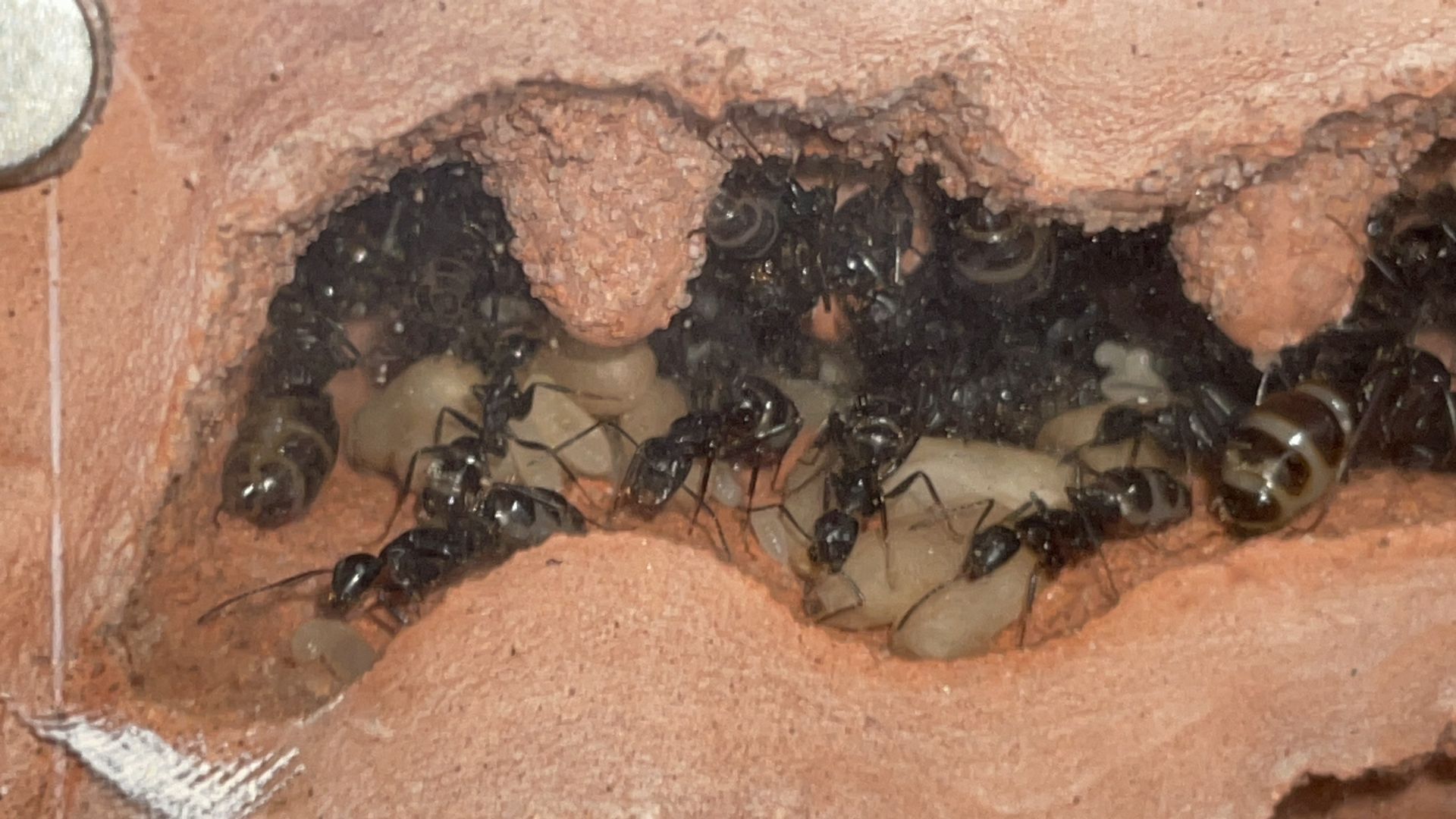
Now in other, more exciting news: the P. occidentalis got female alates (strangely enough no males). This was back in May. I didn't know what to do with them, so I just closed all the lids on their outworlds as tightly as possible in the hopes that they wouldn't fly out. In (around) August, I saw some walking around with only one wing, so I'm guessing the workers took their wings off and forced them into labor. One of these is their outworld, and another picture is a top view of a cup of dirt that I gave them. The whole colony moved into the cup of dirt (at least a few hundred workers), but I assume they're doing fine. By the way, in terms of diet, they've been eating mostly dandelion and nyjer seeds. They prefer dandelion, but will take nyjer. Two years later and my opinion hasn't changed: These are still the best ants I've ever kept.
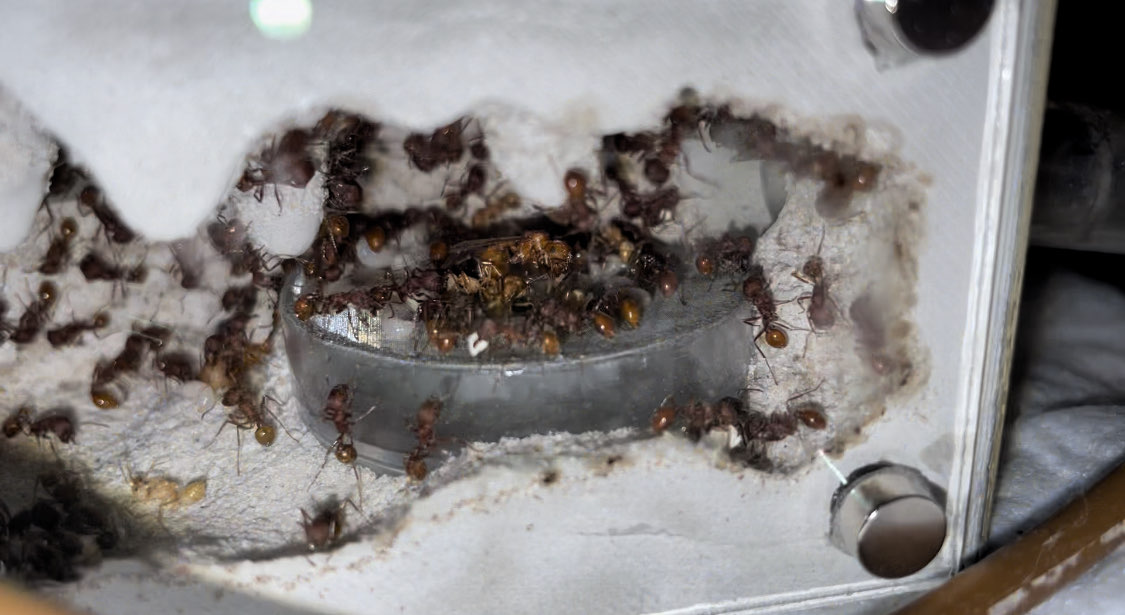
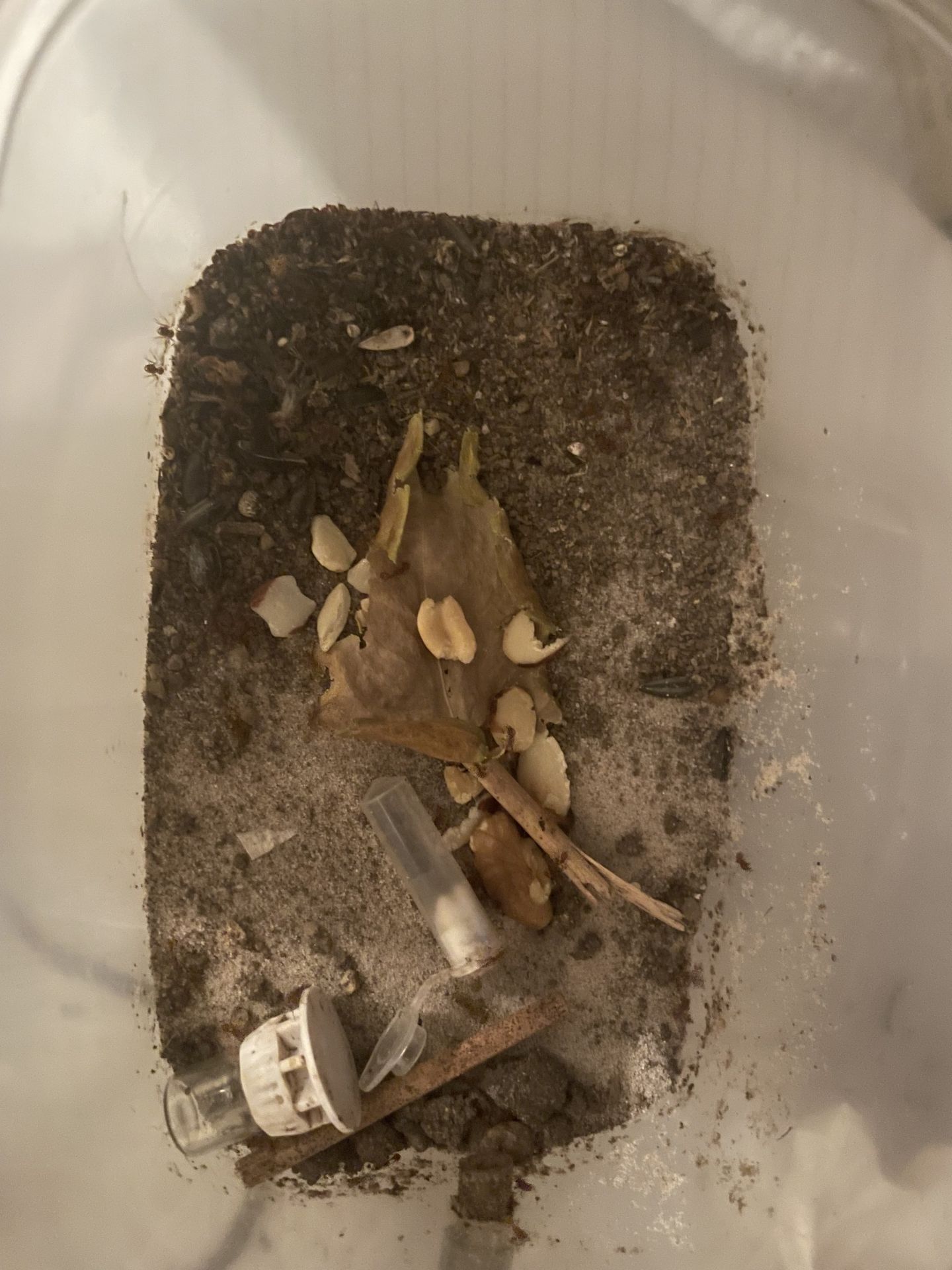
And now on to the P. imparis. This colony is honestly a mystery to me. I have barely fed them anything for these two years, yet they consistently have a massive pile of brood. Their active period is incredibly brief too, maybe for the second half of February and the first half of March they're active and then up until October or November they're completely dormant. They've been on a diet of almost solely mealworms and crickets. Also, they got male alates. Maybe that queen they used to have laid infertile eggs that developed into males? I guess I'll find out this spring. Circled in blue is a male.
Edited by DDD101DDD, September 2 2024 - 9:21 PM.
